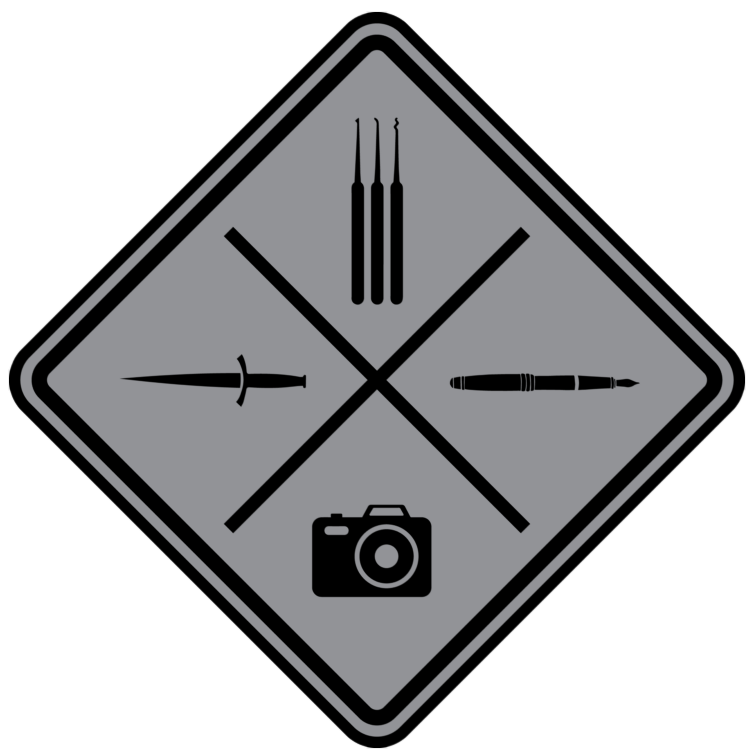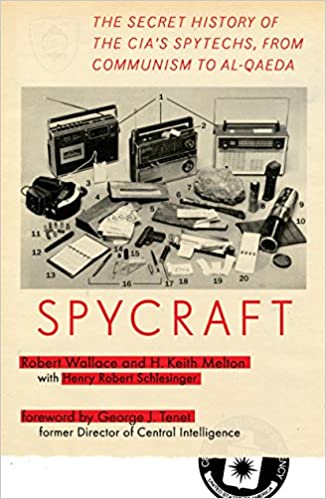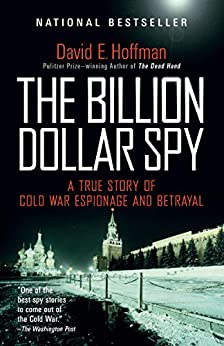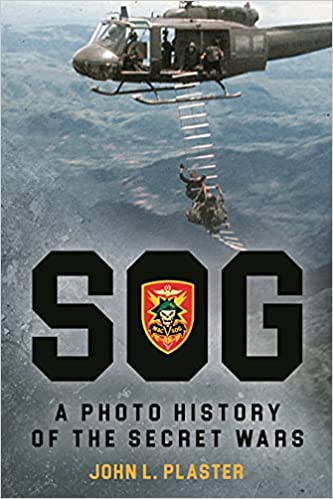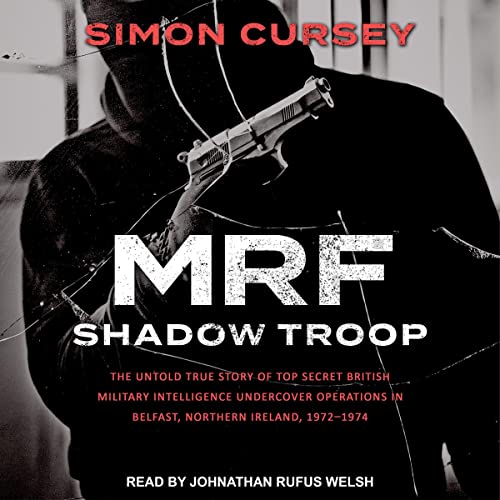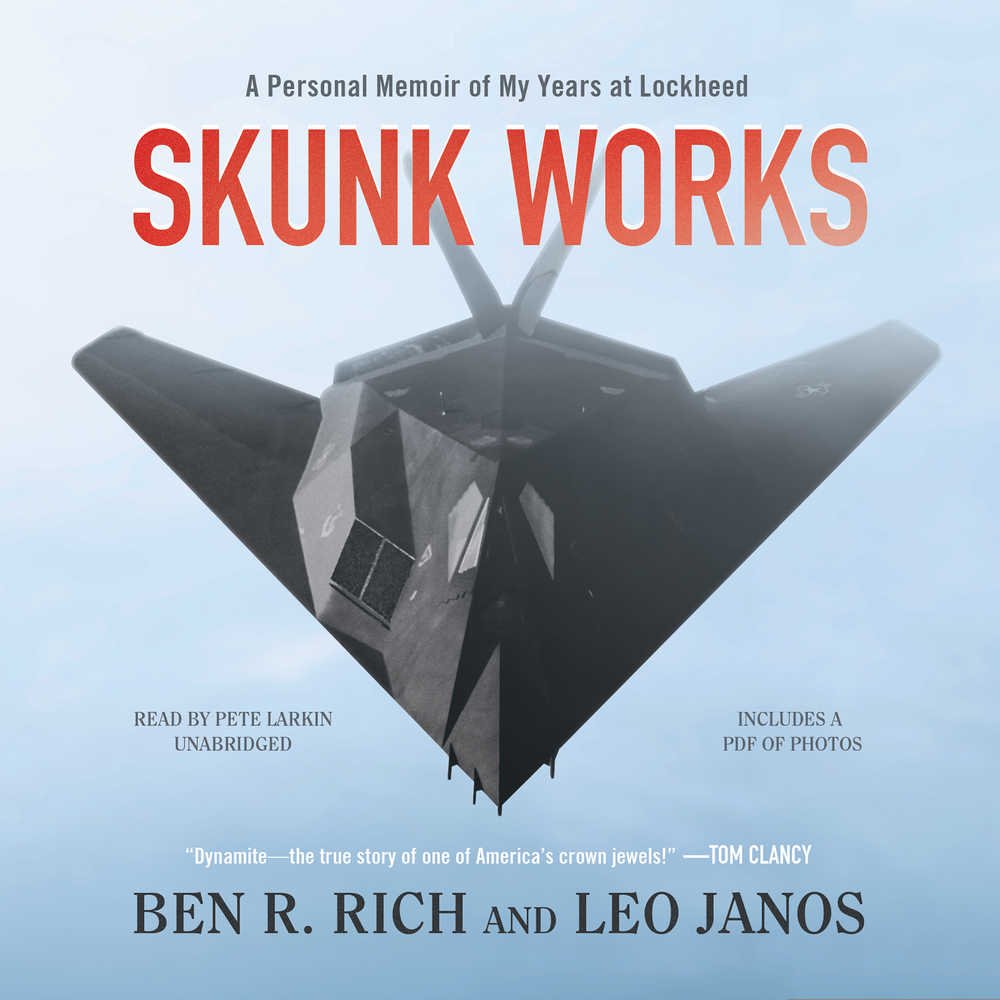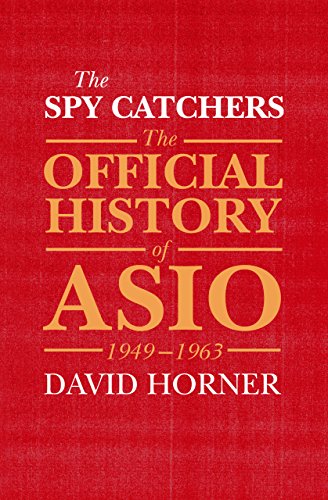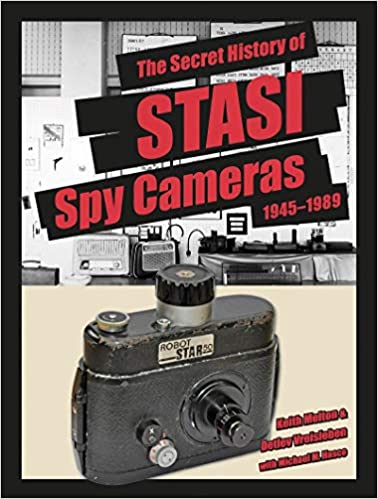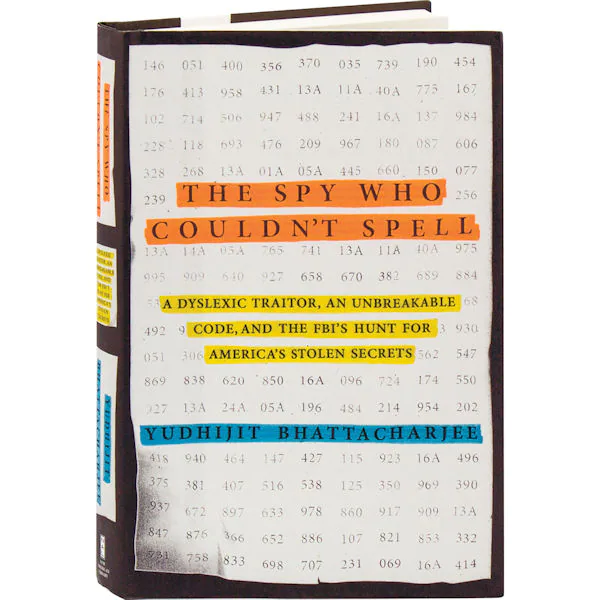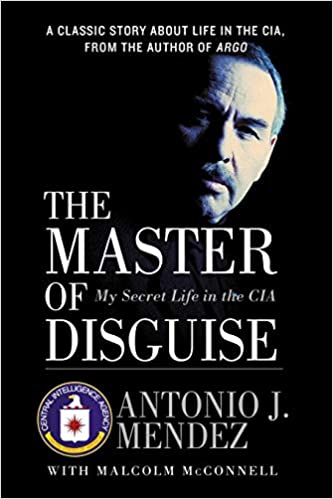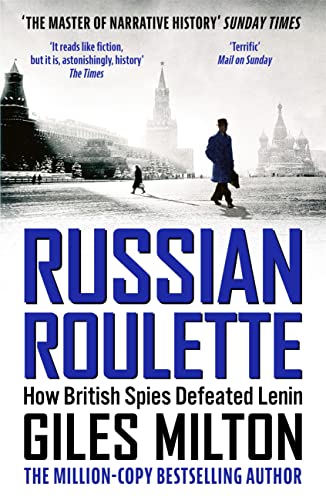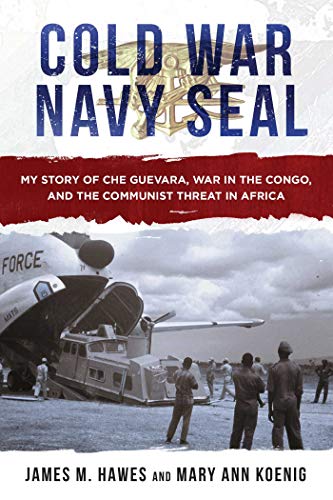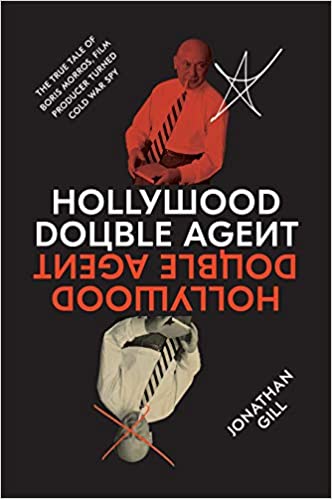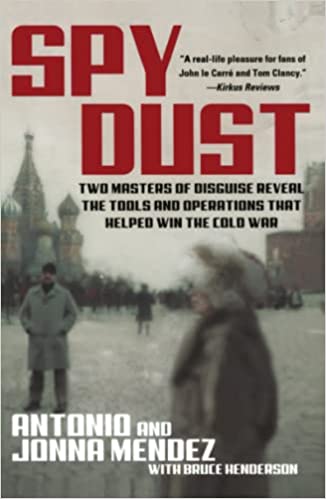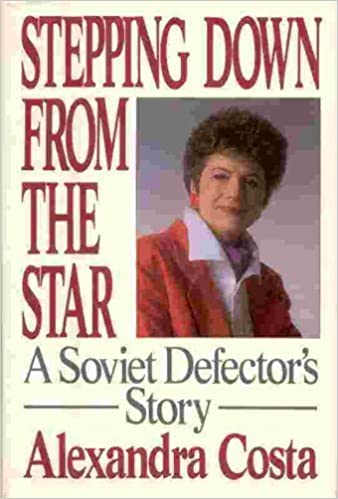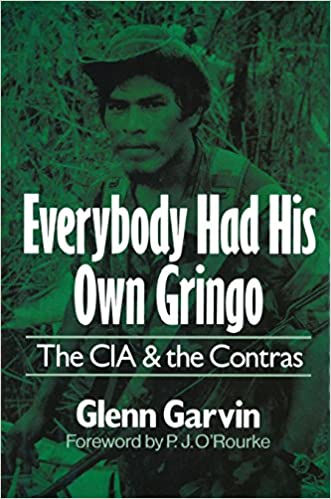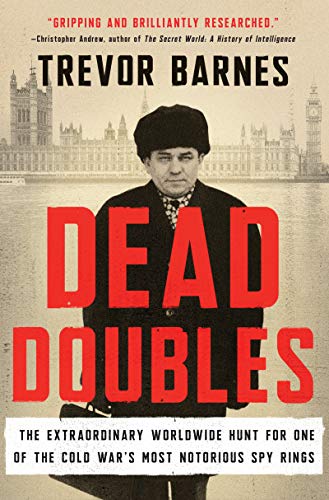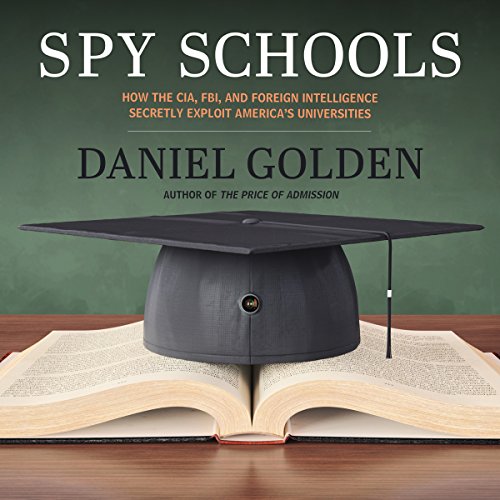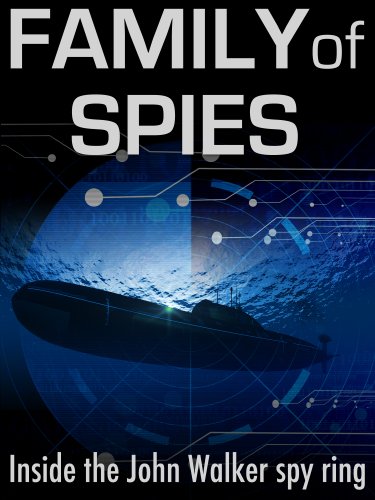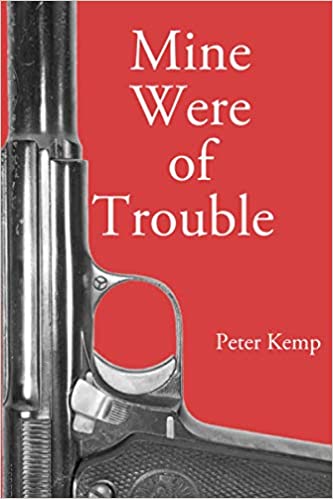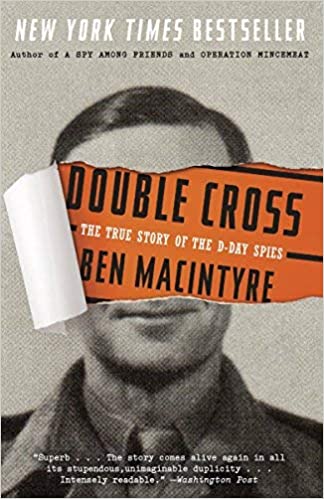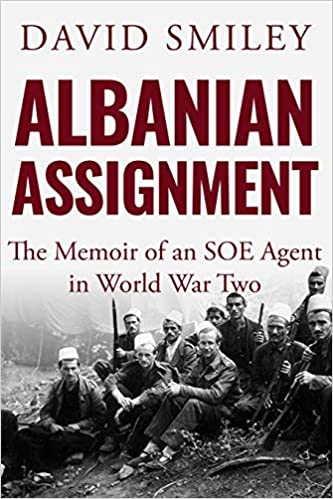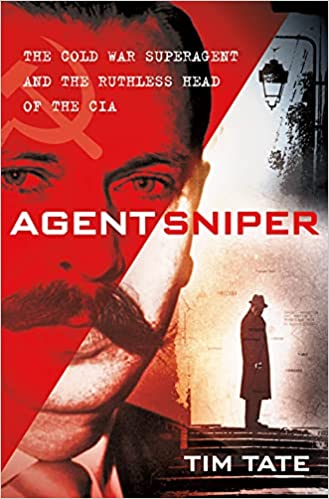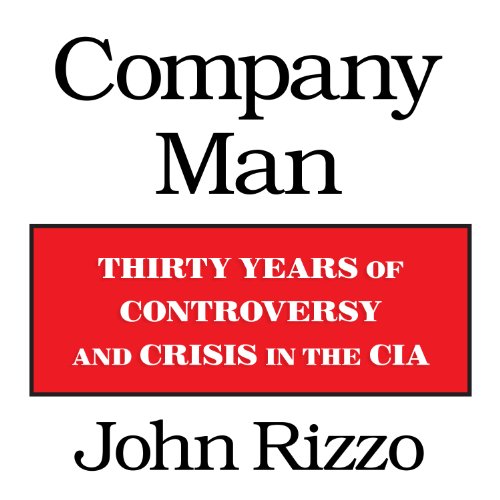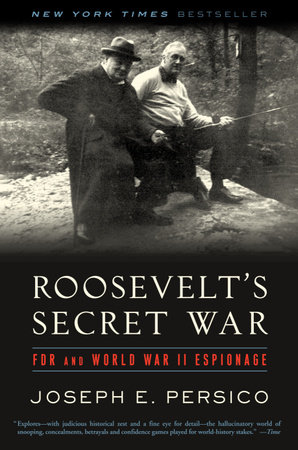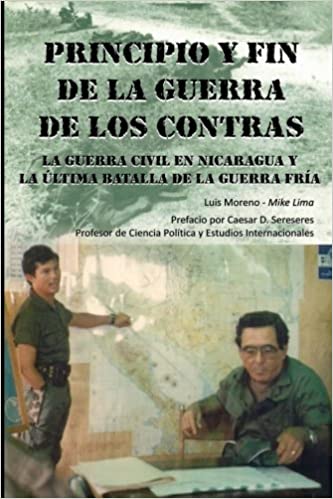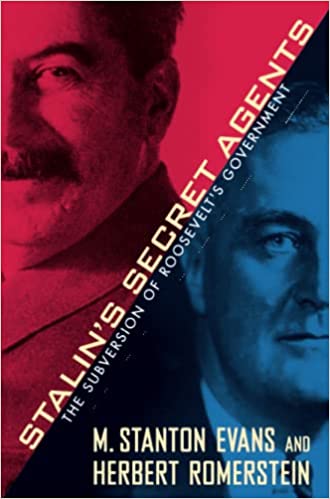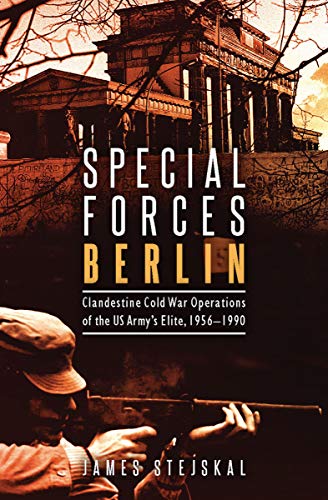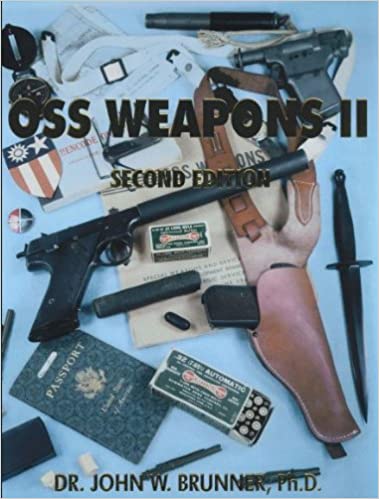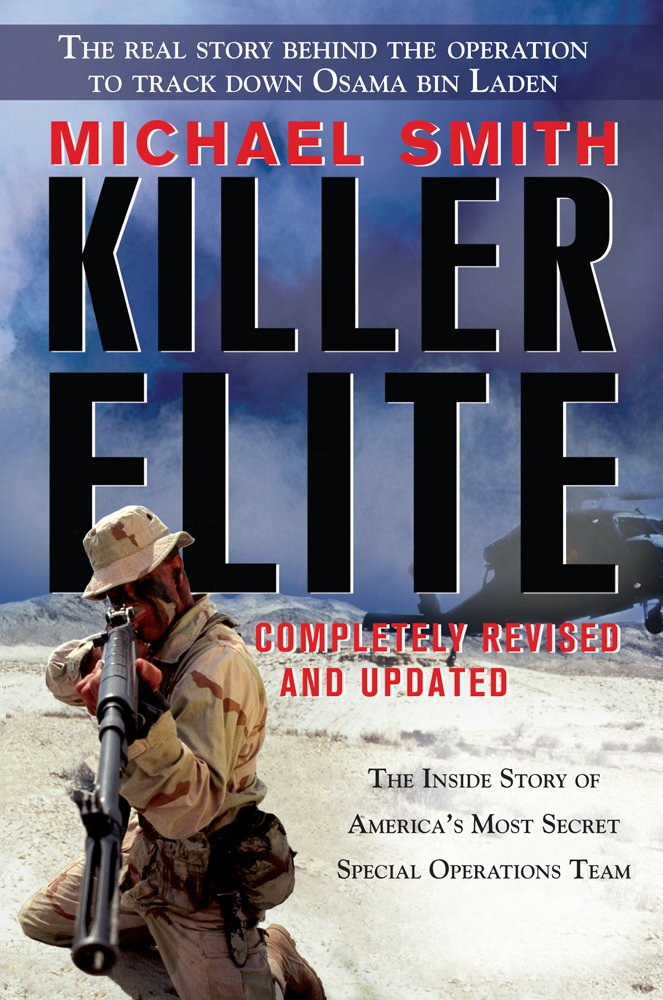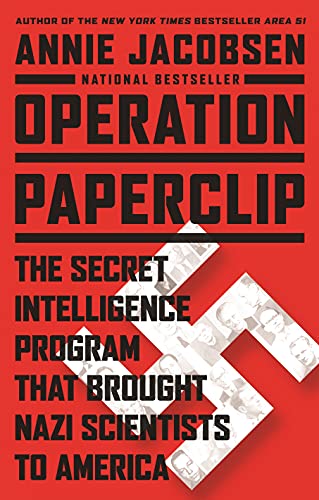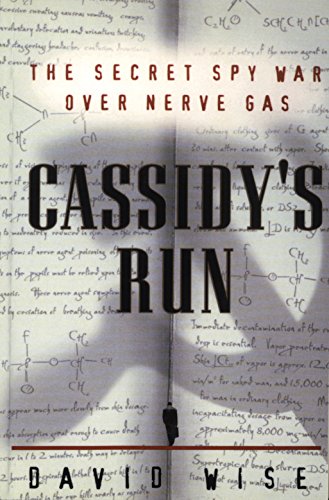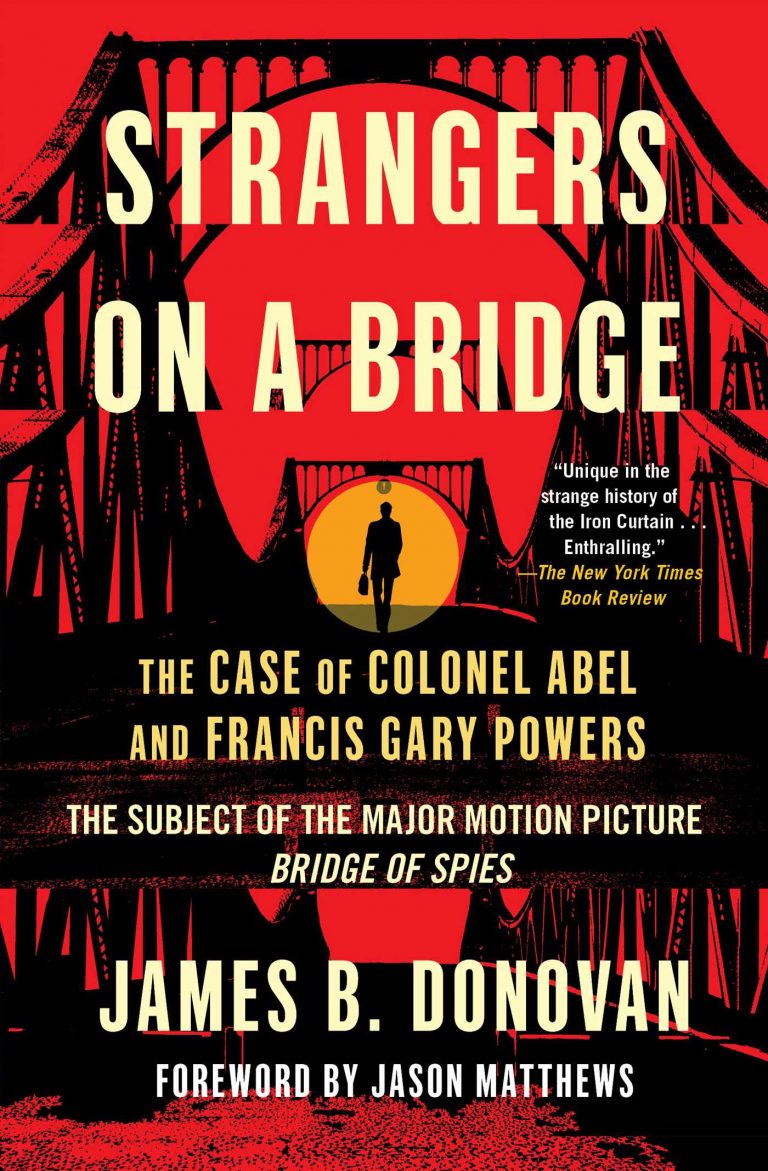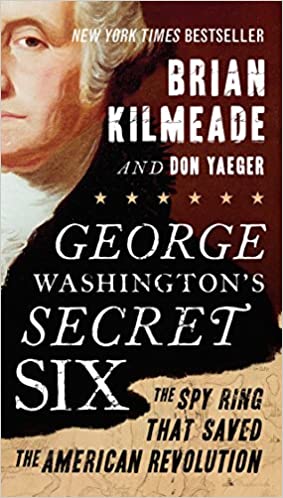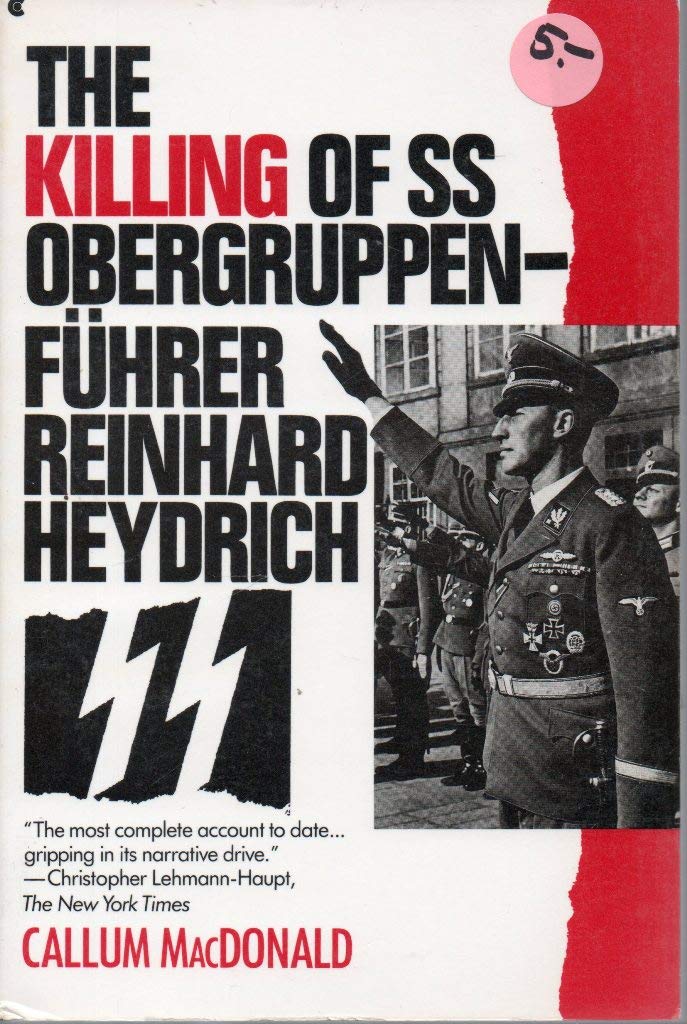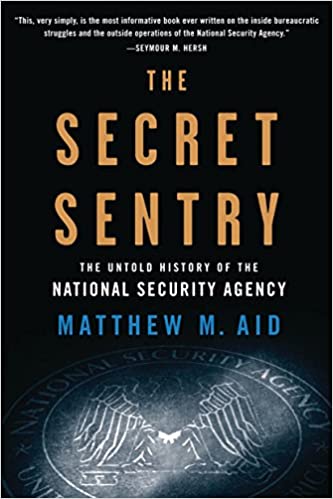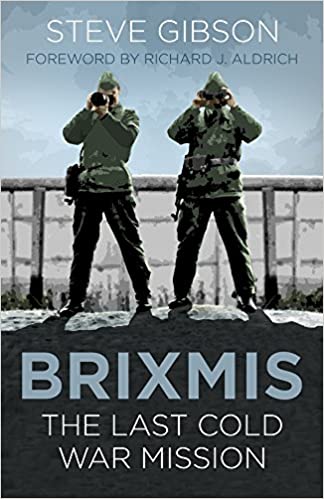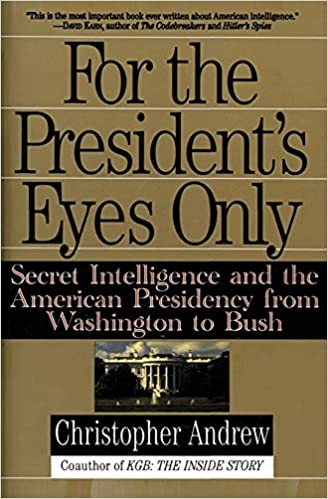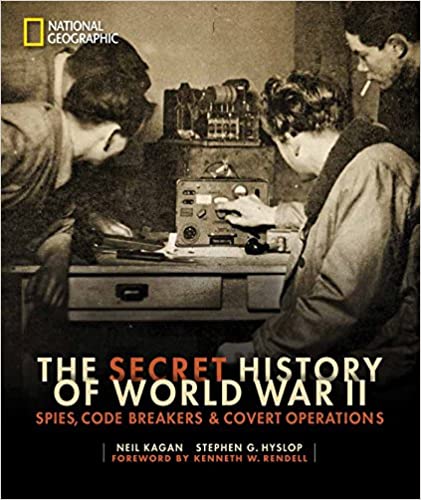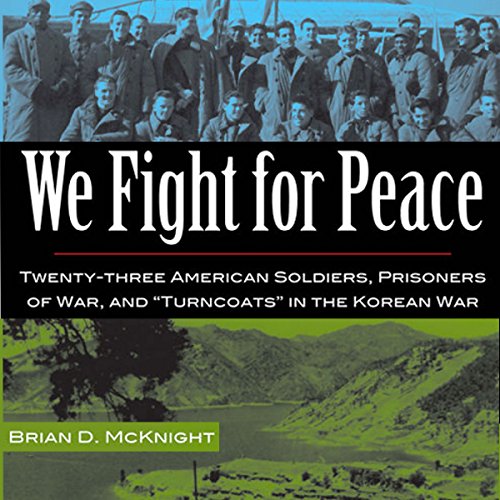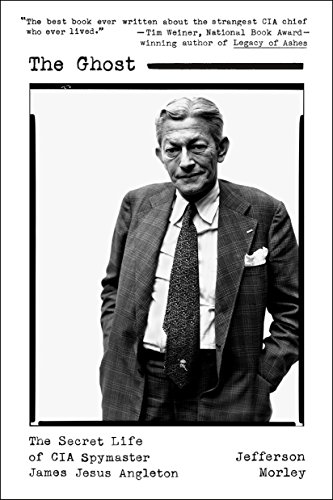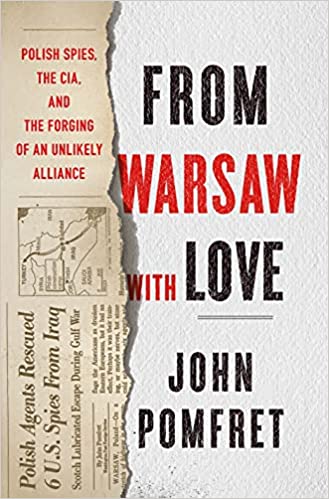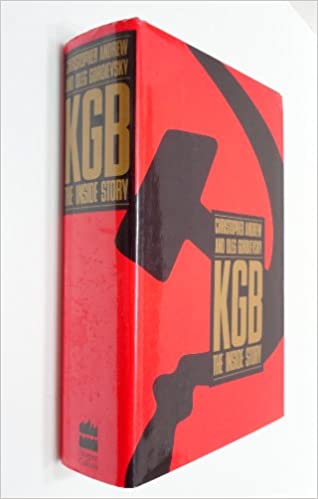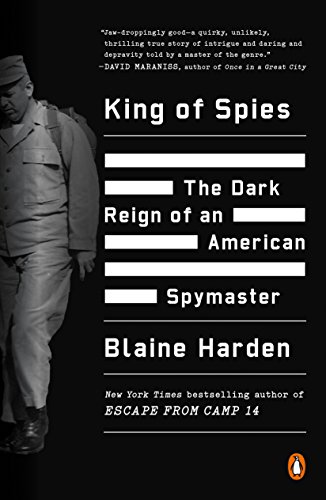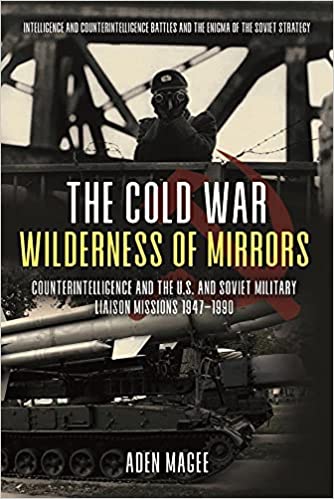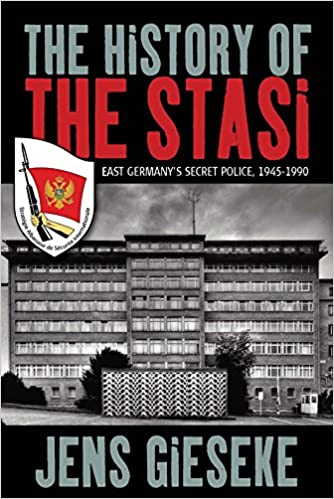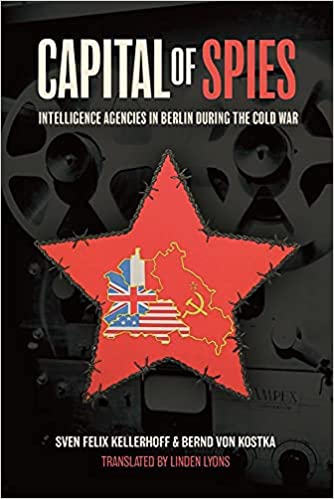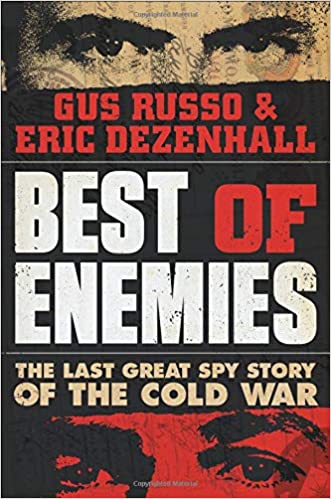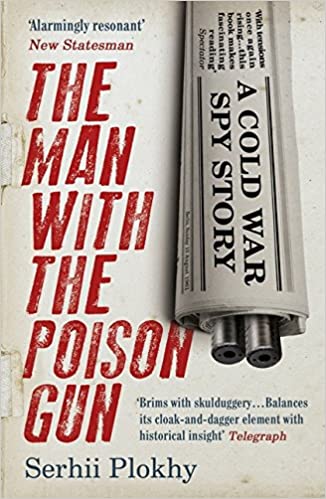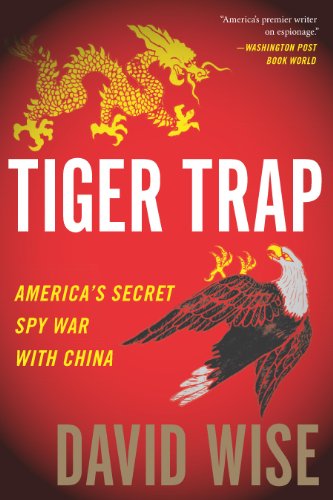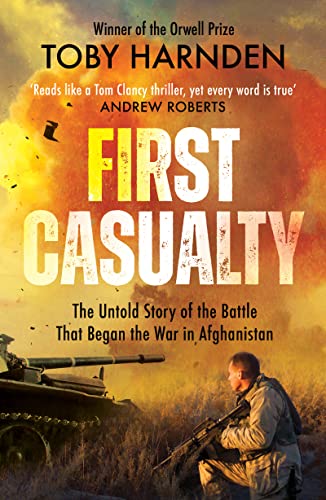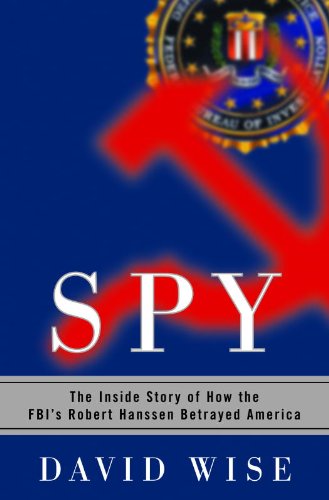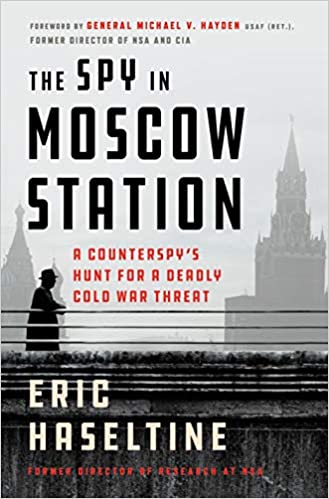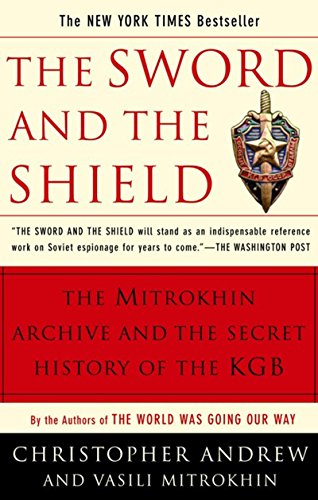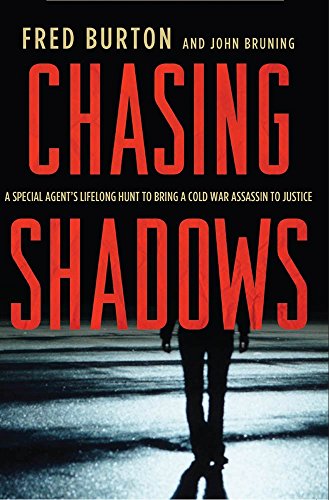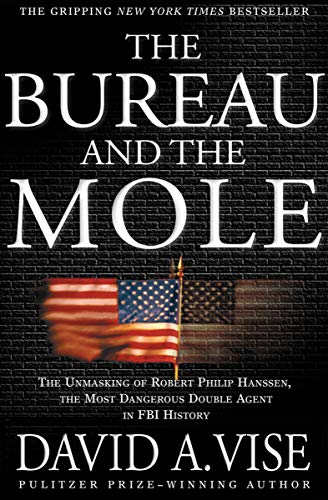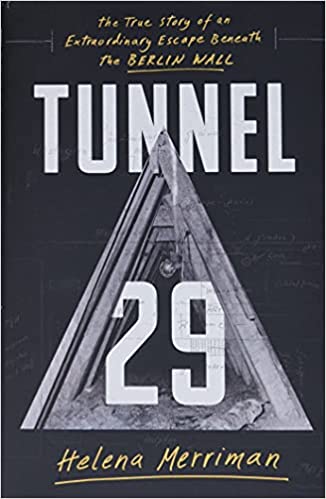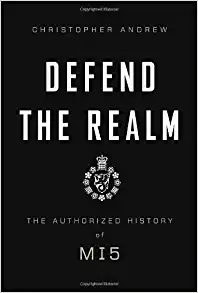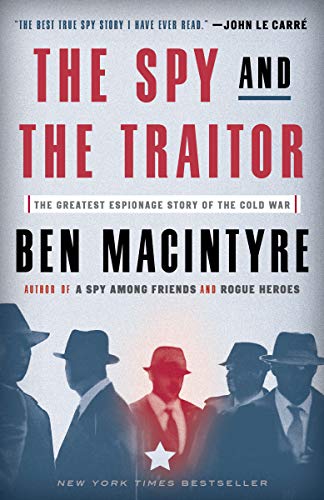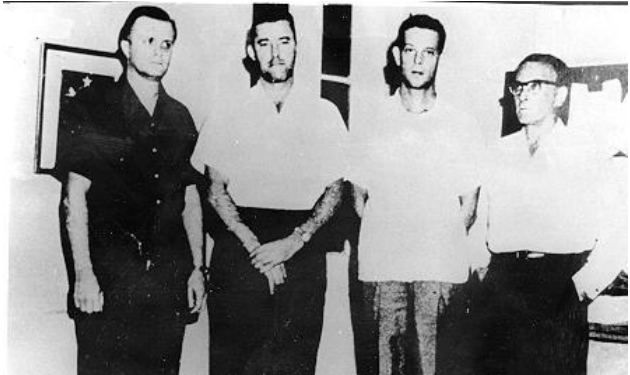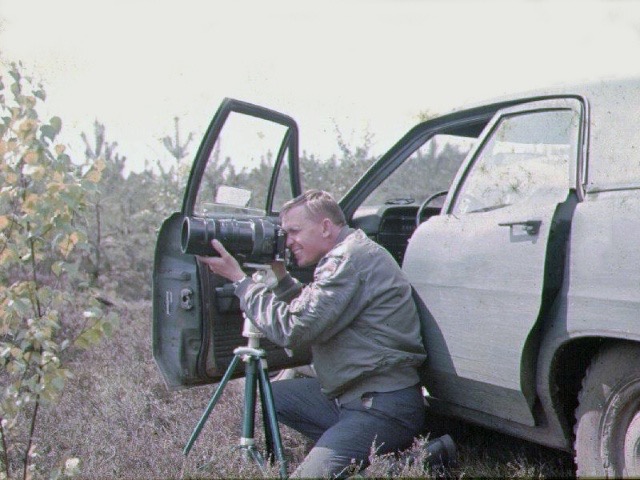One of the questions I get asked most frequently is if I can recommend any good books on espionage. And the answer is yes, I definitely can.
I typically read one non-fiction book a week on average, in order to keep up with my research, and to prepare to interview authors and historians on the Spycraft 101 podcast. Over the past two years I’ve read nearly 100 books, as well as dozens of magazine and newspaper articles. Here I’ve collected all of them together, in no particular order.
I’m not going to rank them against each other as that would be a disservice to many wonderful authors, especially those from whom I’ve read more than one book. But if the books is listed here, you have my guarantee that it’s worth your time if you’re interested in learning more about the so-called “Wilderness of Mirrors”.
I’ll contiinue to add to this list over time as I read more books and interview more authors.
Click on the book images to purchase them for yourself. These links are all affiliate links, meaning I’ll earn a small commission each time you purchase something through this link. So you’ll be supporting the book’s author and helping me keep the lights on with every purchase made here.
1. Spycraft: The Secret History of the CIA’s Spytechs, from Communism to Al-Qaeda
The CIA’s Office of Technical Service is the ultrasecret department that grappled with challenges such as:
What does it take to build a quiet helicopter?
How does one embed a listening device in a cat?
What is an invisible photo used for?
These amazingly inventive devices were created and employed against a backdrop of geopolitical tensions—including the Cold War, the Cuban Missile Crisis, and continuing terrorist threats. Written by Robert Wallace, the former director of the Office of Technical Service, and internationally renowned intelligence historian Keith Melton, Spycraft is both a fantastic encyclopedia of gadgetry and a revealing primer on the fundamentals of high-tech espionage.
2. The Billion Dollar Spy: A True Story of Cold War Espionage and Betrayal
It was the height of the Cold War, and a dangerous time to be stationed in the Soviet Union. One evening, while the chief of the CIA’s Moscow station was filling his gas tank, a stranger approached and dropped a note into the car. The chief, suspicious of a KGB trap, ignored the overture. But the man had made up his mind. His attempts to establish contact with the CIA would be rebuffed four times before he thrust upon them an envelope whose contents would stun U.S. intelligence.
In the years that followed, that man, Adolf Tolkachev, became one of the most valuable spies ever for the U.S. But these activities posed an enormous personal threat to Tolkachev and his American handlers. They had clandestine meetings in parks and on street corners, and used spy cameras, props, and private codes, eluding the ever-present KGB in its own backyard—until a shocking betrayal put them all at risk.
I’ve posted about Tolkachev previously on my Instagram page and consider him to be one of the least known, but most important figures of the Cold War. his incredible bravery and sacrifice greatly assisted the United States in coming out on top by the end of the Cold War. Despite the fact that he never saw the United States, I consider him to be a great American. The Billion Dollar Spy: A True Story of Cold War Espionage and Betrayal is a powerful testament to one man’s ability to change history.
Author David E. Hoffman was also a guest on my podcast for episode #11, and was the first (but not last) Pulitzer Prize-winning author to sit down with me to discuss their work.
3. SOG: A Photo History of the Secret Wars
In 1972 the U.S. military destroyed all known photos of the top-secret Studies and Observations Group, with the intention that details could never be made public. But unknown to those in charge, SOG veterans had brought back with them hundreds of photographs of SOG in action and would keep them secret for more than three decades.
In this new edition of SOG: A Photo History of the Secret Wars, more than 700 irreplaceable photos bring to life the stories of SOG legends Larry Thorne, Bob Howard, Dick Meadows, George Sisler, “Q” and others, and document what really happened deep inside enemy territory: Operation Tailwind, the Son Tay raid, SOG’s defense of Khe Sanh, Hatchet Force operations, Bright Light rescues, HALO insertions, string extractions, SOG’s darkest programs and much more.
4. MRF Shadow Troop: The Untold True Story of Top Secret British Military Intelligence Undercover Operations in Belfast, Northern Ireland, 1972-1974
Some thought it stood for “Military Reconnaissance Force”, others “Mobile Reconnaissance Force”. Many people thought it didn’t exist at all….
For decades there has been argument in the media and amongst politicians about the possible existence and extent of a shoot-to-kill policy in Northern Ireland. MRF Shadow Troop confirms there was such an agenda in the early, chaotic days of British military intervention across the Irish Sea. But amongst the mountain of speculation there is little of any accuracy or authority relating to this period.
The speculation about the unit’s name and mission only added to the uncertainty amongst their targets: members of the Provisional Irish Republican Army, the IRA, the provos. Simon Cursey was recruited into the Military Reaction Force – the unit’s true name – in 1972. This book is his personal account of his time with the group and in it he reveals the truth about their operations-the briefings, missions, political wrangling, and government-sanctioned law-bending.
MRF Shadow Troop: The Untold True Story of Top Secret…is a fascinating, exciting but above all accurate historical audiobook about the pioneers of counter-terrorism.
5. Skunk Works: A Personal Memoir of My Years at Lockheed
From the development of the U-2 to the Stealth fighter, Skunk Works: A Personal Memoir of My Years at Lockheed is the true story of America’s most secret and successful aerospace operation. As recounted by Ben Rich, the operation’s brilliant boss for nearly two decades, the chronicle of Lockheed’s legendary Skunk Works is a drama of Cold War confrontations and Gulf War air combat, of extraordinary feats of engineering and human achievement against fantastic odds.
Here are up-close portraits of the maverick band of scientists and engineers who made the Skunk Works so renowned. Filled with telling personal anecdotes and high adventure, with narratives from the CIA and from Air Force pilots who flew the many classified, risky missions, this book is a riveting portrait of the most spectacular aviation triumphs of the twentieth century.
6. The Spy Catchers: The Official History of ASIO, 1949-1963
For the first time, ASIO has opened its archives to an independent historian. With unfettered access to the records, David Horner tells the real story of Australia’s domestic intelligence organisation, from shaky beginnings to the expulsion of Ivan Skripov in 1963.
From the start, ASIO’s mission was to catch spies. In the late 1940s, the top secret Venona program revealed details of a Soviet spy ring in Australia, supported by leading Australian communists. David Horner outlines the tactics ASIO used in counterespionage, from embassy bugging to surveillance of local suspects. His research sheds new light on the Petrov Affair, and details incidents and activities that have never been revealed before.
This authoritative and ground-breaking account overturns many myths about ASIO, and offers new insights into broader Australian politics and society in the fraught years of the Cold War.
The Spy Catchers: The Secret History of ASIO 1949 – 1963 is the first of three volumes of The Official History of ASIO.
7. The Secret History of STASI Spy Cameras: 1950–1990
This lavishly illustrated and authoritative book presents the secret history of Stasi and Warsaw Pact subminiature spy cameras used during the Cold War. It is a history that could have been written only through the collaboration of veteran Stasi technical intelligence officers and the world’s foremost historians on Cold War spy cameras and tradecraft.
With more than 450 photographs, the book reveals the history, development, and operational use of more than 70 secret cameras as used by one of the world’s most formidable intelligence services—East German Stasi, or MfS—for secretly copying documents, and for surveillance and compromise. Every major camera system used by the Stasi is covered.
A bonus at the end of the book is an exhaustive glossary of Stasi and Warsaw Pact photographic systems and optical devices. The Secret History of Stasi Spy Cameras 1950 – 1990 is a must-have for camera collectors, military enthusiasts, historians, and counterintelligence officers.
8. The Spy Who Couldn’t Spell: A Dyslexic Traitor, an Unbreakable Code, and the FBI’s Hunt for America’s Stolen Secrets
Before Edward Snowden’s infamous data breach, the largest theft of government secrets was committed by an ingenious traitor whose intricate espionage scheme and complex system of coded messages were made even more baffling by his dyslexia. His name is Brian Regan, but he came to be known as The Spy Who Couldn’t Spell.
In December of 2000, FBI Special Agent Steven Carr of the bureau’s Washington, D.C., office received a package from FBI New York: a series of coded letters from an anonymous sender to the Libyan consulate, offering to sell classified United States intelligence. The offer, and the threat, were all too real. A self-proclaimed CIA analyst with top secret clearance had information about U.S. reconnaissance satellites, air defense systems, weapons depots, munitions factories, and underground bunkers throughout the Middle East.
Rooting out the traitor would not be easy, but certain clues suggested a government agent with a military background, a family, and a dire need for money. Leading a diligent team of investigators and code breakers, Carr spent years hunting down a dangerous spy and his cache of stolen secrets.
In this fast-paced true-life spy thriller, Yudhijit Bhattacharjee reveals how the FBI unraveled Regan’s strange web of codes to build a case against a man who nearly collapsed America’s military security.
9. The Master of Disguise: My Secret Life in the CIA
From the author of Argo comes an unforgettable behind-the-scenes story of espionage in action. In the first ever memoir by a top-level operative to be authorized by the CIA, Antonio J. Mendez reveals the cunning tricks and insights that helped save hundreds from deadly situations.
Adept at creating new identities for anyone, anywhere, Mendez was involved in operations all over the world, from “Wild West” adventures in East Asia to Cold War intrigue in Moscow. In 1980, he orchestrated the escape of six Americans from a hostage situation in revolutionary Tehran, Iran. This extraordinary operation inspired the movie Argo, directed by and starring Ben Affleck.
The Master of Disguise gives us a privileged look at what really happens at the highest levels of international espionage: in the field, undercover, and behind closed doors.
10. Russian Roulette: How British Spies Defeated Lenin
In 1917, an eccentric band of British spies is smuggled into newly-Soviet Russia. Their goal? To defeat Lenin’s plan to destroy British India and bring down the democracies of the West.
These extraordinary spies, led by Mansfield Cumming, proved brilliantly successful. They found a wholly new way to deal with enemies, one that relied on espionage and dirty tricks rather than warfare. They were the unsung founders of today’s modern, highly professional secret services. They were also the inspiration for fictional heroes to follow, from James Bond to Jason Bourne. Russian Roulette: How British Spies Defeated Lenin is a must-read.
11. Cold War Navy SEAL: My Story of Che Guevara, War in the Congo, and the Communist Threat in Africa
Sometime in 1965, James Hawes landed in the Congo with cash stuffed in his socks, morphine in his bag, and a basic understanding of his mission: recruit a mercenary navy and suppress the Soviet- and Chinese-backed rebels engaged in guerilla movements against a pro-Western government. He knew the United States must preserve deniability, so he would be abandoned in any life-threatening situation; he did not know that Che Guevara attempting to export his revolution a few miles away.
Cold War Navy SEAL gives unprecedented insight into a clandestine chapter in US history through the experiences of Hawes, a distinguished Navy frogman and later a CIA contractor. His journey began as an officer in the newly-formed SEAL Team 2, which then led him to Vietnam in 1964 to train hit-and-run boat teams who ran clandestine raids into North Vietnam. Those raids directly instigated the Gulf of Tonkin Incident. The CIA tapped Hawes to deploy to the Congo, where he would be tasked with creating and leading a paramilitary navy on Lake Tanganyika to disrupt guerilla action in the country. According to the US government, he did not, and could not, exist; he was on his own, 1400 miles from his closest allies, with only periodic letters via air-drop as communication. Hawes recalls recruiting and managing some of the most dangerous mercenaries in Africa, battling rebels with a crew of anti-Castro Cuban exiles, and learning what the rest of the intelligence world was dying to know: the location of Che Guevara.
In vivid detail that rivals any action movie, Hawes describes how he and his team discovered Guevara leading the communist rebels on the other side and eventually forced him from the country, accomplishing a seemingly impossible mission. Complete with never-before-seen photographs and interviews with fellow operatives in the Congo, Cold War Navy SEAL is an unblinking look at a portion of Cold War history never before told.
12. Hollywood Double Agent: The True Tale of Boris Morros, Film Producer Turned Cold War Spy
The Cold War and the Golden Age of Hollywood meet in this story of the remarkable career of Boris Morros, film producer and Russian double agent
Boris Morros was a major figure in the 1930s and ’40s. The head of music at Paramount, nominated for Academy Awards, he then went on to produce his own films with Laurel and Hardy, Fred Astaire, Henry Fonda, and others. But as J. Edgar Hoover would discover, these successes were a cover for one of the most incredible espionage tales in the history of the Cold War—Boris Morros also worked for Russian intelligence.
Morros’s assignments took him to the White House, the Vatican, and deep behind the iron curtain. The high-level intel he provided the KGB included military secrets and compromising information on prominent Americans: his friends. But in 1947, Morros flipped. At the height of the McCarthy era, he played a leading role in a deadly tale. Jonathan Gill’s Hollywood Double Agent: The True Tale of Boris Morros, Film Producer Turned Cold War Spy is an extraordinary story about Russian spies at the heart of American culture and politics, and one man caught in the middle of the Cold War.
13. Spy Dust: Two Masters of Disguise Reveal the Tools and Operations That Helped Win the Cold War
From the author of the Golden Globe winner and Oscar nominated Argo, a true-life thriller set against the backdrop of the Cold War, which unveils the life of an American spy from the inside and dramatically reveals how the CIA reestablished the upper hand over the KGB in the intelligence war.
From the author of the Golden Globe winner and Academy Award winner Argo…
Moscow, 1988. The twilight of the Cold War. The KGB is at its most ruthless, and has now indisputably gained the upper hand over the CIA in the intelligence war. But no one knows how. Ten CIA agents and double-agents have gone missing in the last three years. They have either been executed or they are unaccounted for.
At Langley, several theories circulate as to how the KGB seems suddenly to have become telepathic, predicting the CIA’s every move. Some blame the defection of Edward Lee Howard three years before, and suspect that there are more high-placed moles to be unearthed. Others speculate that the KGB’s surveillance successes have been heightened by the invention of an invisible electromagnetic powder that allows them to keep tabs on anyone who touches it: spy dust.
CIA officers Tony Mendez and Jonna Goeser come together to head up a team of technical wizards and operational specialists, determined to solve the mystery that threatens to overshadow the Cold War’s final act. Working against known and unknown hostile forces, as well as some unfriendly elements within the CIA, they devise controversial new operational methods and techniques to foil the KGB, and show the extraordinary lengths that US intelligence is willing to go to protect a source, then rescue him when his world starts to collapse. At the same time, Tony and Jonna find themselves falling deeply in love.
During a fascinating odyssey that began in Indochina fifteen years before and ends in a breathtakingly daring operation in the heart of the Kremlin’s Palace of Congresses, Spy Dust: Two Masters of Disguise Reveal the Tools and Operations That Helped Win the Cold War catapults the reader from the Hindu Kush to Hollywood, from Havana to Moscow, but cannot truly conclude until its protagonists are safely wedded in rural Maryland.
14. Stepping Down from the Stars: A Soviet Defector’s Story
Soviet defector Alexandra Costa was the first successful defector from the Soviet Embassy in Washington DC in 1985.
Alexandra’s name in the Soviet Union was Yelena Mitrokhina, and after graduating with a degree in Scandinavian languages, she found work in an ultra-secretive school for foreigners who would be trained to conduct covert action in their home countries. Yelena taught classes on Marxist philosophy but was not involved in the tradecraft aspects of their training. Many of her students went on to be arrested or killed upon returning to their home countries.
In the mid-1970s she and her husband Lev Mitrokhin were selected to work out of the Soviet Embassy in Washington DC, where they would work in publishing and international copyright issues. Their time was spent trying to find a market for Soviet authors in the United States, with little success.
Because her husband Lev had never learned to drive, Yelena purchased an Oldsmobile and loved the mobility and freedom it provided. But unbeknownst to her, FBI counterintelligence suspected she was a KGB agent operating undercover, because it was so unusual for an embassy wife to be driving herself around.
One day in 1978, while taking the car in for service, she struck up a conversation with a friendly and personable salesman at the dealership. That initial conversation led to a deep friendship, to the point that she was making excuses to take the car in for service as often as possible. Soon they were dining together in out of the way restaurants where they wouldn’t be seen together.
That’s when the FBI swooped in to make their pitch. Yelena’s time in the US was drawing to a close, and she very much wanted to stay in the US. With their assistance, she became the first successful defector from the Soviet embassy in Washington DC in 40 years. Stepping Down from the Star is her story in her own words.
Alexandra was also my guest for episode #35 of the Spycraft 101 podcast. You can listen to her story first-hand there.
15. Everybody Had His Own Gringo: The CIA and the Contras
The Reagan administration spent eight years and a vast amount of money backing the Contras in their bid to overthrow the Sandinista government of Nicaragua. Although the Sandinistas eventually were ousted, it was by the ballot box and not the M-16, for by that time the Contras had ceased to be a viable force.
What caused their untimely demise? Some of the fault lies with the Contras themselves, but in this account of villainy, courage, incompetence and violent death in a country at war with itself, the author sets out to show that there is blame in Washington, too. Garvin covered the war for six years, often travelling with Contra combat units, and his work was nominated for Pulitzer Prizes in 1988 and 1989. He won the Mencken Award for Investigative Reporting.
My previous podcast guest Luis Moreno, the one-armed Contra commander, is featured heavily in this book, and this was one of my primary sources when I was preparing for that interview. The episode is #33 of the Spycraft 101 podcast, if you want to hear it for yourself. His story is incredible, and Everybody Had His Own Gringo is well worth a read.
16. Dead Doubles: The Extraordinary Worldwide Hunt for One of the Cold War’s Most Notorious Spy Rings
The astonishing but true story of one of the most notorious spy cases from the Cold War—and the international manhunt that seized global attention as it revealed the shadowy world of deep cover KGB operatives.
The dramatic arrest in London on January 7, 1961 of five Soviet spies made headlines worldwide and had repercussions around the globe. Alerted by the CIA, Britain’s security service, MI5, had discovered two British spies stealing invaluable secrets from the highly sensitive submarine research center at Portland, UK. Their controller, Gordon Lonsdale, was a Canadian who frequently visited a middle-aged couple, the Krogers, in their sleepy London suburb. But the seemingly unassuming Krogers were revealed to be deep cover American KGB spies—infamous undercover agents the FBI had been hunting for years—and they were just one part of an extensive network of Soviet operatives in the UK.
In the wake of the spies’ sensational trial, the FBI uncovered the true identity of the enigmatic Lonsdale—Konon Molody, a Russian who had lived in California before being recruited by the KGB. Molody opened secret talks with MI5 to betray Russia, but before he had the chance, the KGB blackmailed Britain into spy swaps for him and the Krogers.
Based on revelatory, newly-released archival material and inside sources from around the world, Dead Doubles follows the hunt for the highly damaging Portland Spy Ring. As gripping as a le Carré novel, this incredible narrative, layered with false identities, deceptions, and betrayal, crisscrosses from the UK to the USSR to the US, Canada, Europe and New Zealand, and brings to life one of the most extraordinary spy stories of the Cold War.
Author Trevor Barnes sat down with me for an interview about Dead Doubles, and is featured on episode #33 of the Spycraft 101 podcast.
17. Spy Schools: How the CIA, FBI, and Foreign Intelligence Secretly Exploit America’s Universities
Grounded in extensive research and reporting, Spy Schools: How the CIA, FBI, and Foreign Intelligence Secrety Exploit America’s Universities reveals how academia has emerged as a frontline in the global spy game. In a knowledge-based economy, universities are repositories of valuable information and research, where brilliant minds of all nationalities mingle freely with few questions asked. Intelligence agencies have always recruited bright undergraduates, but now, in an era when espionage increasingly requires specialized scientific or technological expertise, they’re wooing higher-level academics – not just as analysts, but also for clandestine operations.
Golden uncovers unbelievable campus activity – from the CIA placing agents undercover in Harvard Kennedy School classes and staging academic conferences to persuade Iranian nuclear scientists to defect, to a Chinese graduate student at Duke University stealing research for an invisibility cloak, and a tiny liberal arts college in Marietta, Ohio, exchanging faculty with China’s most notorious spy school. He shows how relentlessly and ruthlessly this practice has permeated our culture, not just inside the US, but internationally as well.
You can also hear this story first-hand from author Daniel Golden on my podcast, in episode #32.
18. Family of Spies: Inside the John Walker Spy Ring
For two decades John Walker fed secrets absolutely crucial to America’s national security to the KGB. Incredibly, for two decades, his treason remained undetected. He grew increasingly more sophisticated with time – far different from the naive Navy watch officer who, in December 1967, simply walked into the Soviet Embassy in Washington and said, “I want to sell you top secrets.”
But his womanizing, his free-spending lifestyle, his boat, his plane, his cars, his frequent trips to Vienna and his discordant family life were more than enough to generate suspicion. However, tips from his wife, Barbara, were repeatedly ignored by the FBI.
Pete Earley conducted more than one hundred interviews for this book, including twenty-three separate interviews with John Walker, Jr., lasting an average of seven hours each. He spent several hundred hours talking with ten other members of the immediate family, and many more with the other eighty-seven people interviewed. Out of this extraordinary firsthand access, as well as essential documents, telephone transcripts and FBI files, comes this riveting story of what KGB officer Vitaly Yurchenko called “the greatest case in KGB history. We deciphered millions of your messages. If there had been a war, we would have won it.”
Family of Spies is as compelling as a superlative novel of international intrigue and suspense. But because it is fact, not fiction, its lessons are frightening. How could this have happened? How can we prevent it from happening again? What can we learn from John Walker’s story to ensure that our nation’s secrets remain inviolable in the future?
19. Mine Were of Trouble: A Nationalist Account of the Spanish Civil War
Spain, 1936. Escalating violence between left- and right-wing political factions boils over. Military officers stage a coup against a democratically elected, Soviet-backed, government. The country is thrown into chaos as centuries-old tensions return to the forefront. Hundreds of thousands of Spaniards choose sides and engage in the most devastating combat since the First World War. For loyalists to the Republic, the fight is seen as one for equality and their idea of progress. For the rebels, the struggle is a preemptive strike by tradition against an attempted communist takeover.
Thousands of foreigners, too, join the struggle. Most fight with the Soviet-sponsored International Brigades or other militias aligned with the loyalist “Republicans”. Only a few side with the rebel “Nationalists”. One of these rare volunteers for the Nationalists was Peter Kemp, a young British law student. Kemp, despite having little training or command of the Spanish language, was moved by the Nationalist struggle against international Communism. Using forged documents, he sneaked into Spain and joined a traditionalist militia, the Requetés, with which he saw intense fighting. Later, he volunteered to join the legendary and ruthless Spanish Foreign Legion, where he distinguished himself with heroism. Because of this bravery, he was one of the few foreign volunteers granted a private audience with Generalissimo Francisco Franco.
Kemp published his story in 1957, one of the only English accounts of the war from the Nationalist perspective, after a prestigious military career with the British Special Operations Executive during the Second World War.
Mine Were of Trouble: A Nationalist Account of the Spanish Civil War has been out-of-print for decades, but is at last available in print and ebook form once again.
Kemp is also featured in Chapter19 of my book Covert Arms: Weapons from the World of Spycraft and Espionage. He’s the only person ever known to have carried a Welgun prototype submachinegun into combat during World War II, when he served with the SOE.
20. Double Cross: The True Story of the D-Day Spies
In Double Cross, New York Times bestselling author Ben Macintyre returns with the untold story of one of the greatest deceptions of World War II, and of the extraordinary spies who achieved it.
On June 6, 1944, 150,000 Allied troops landed on the beaches of Normandy and suffered an astonishingly low rate of casualties. D-Day was a stunning military accomplishment, but it was also a masterpiece of trickery. Operation Fortitude, which protected and enabled the invasion, and the Double Cross system, which specialized in turning German spies into double agents, deceived the Nazis into believing that the Allies would attack at Calais and Norway rather than Normandy. It was the most sophisticated and successful deception operation ever carried out, ensuring Allied victory at the most pivotal point in the war.
This epic event has never before been told from the perspective of the key individuals in the Double Cross system, until now. These include its director (a brilliant, urbane intelligence officer), a colorful assortment of MI5 handlers (as well as their counterparts in Nazi intelligence), and the five spies who formed Double Cross’s nucleus: a dashing Serbian playboy, a Polish fighter-pilot, a bisexual Peruvian party girl, a deeply eccentric Spaniard, and a volatile Frenchwoman. The D-Day spies were, without question, one of the oddest military units ever assembled, and their success depended on the delicate, dubious relationship between spy and spymaster, both German and British. Their enterprise was saved from catastrophe by a shadowy sixth spy whose heroic sacrifice is revealed here for the first time.
With the same depth of research, eye for the absurd and masterful storytelling that have made Ben Macintyre an international bestseller, Double Cross is a captivating narrative of the spies who wove a web so intricate it ensnared Hitler’s army and carried thousands of D-Day troops across the Channel in safety.
21. Albanian Assignment: The Memoir of an SOE Agent in World War Two
In 1940 Winston Churchill established the Special Operations Executive to “set Europe ablaze.”
Three years later David Smiley and Billy McLean were parachuted into northern Greece and crossed the border into Albania to do just that.
For the next eight months Smiley mediated between the competing resistance factions and organised them to conduct ambushes and acts of sabotage on fascist armies and infrastructure.
His actions were rewarded with an immediate Military Cross, yet his work in Albania was not done. Soon after he had left the country tensions between the Albanian resistance movements had deteriorated into open conflict meaning that Smiley and McLean were once again forced to parachute into the country to reconcile the guerrilla forces whilst continuing the fight against the Nazi forces.
Albanian Assignment: The Memoir of an SOE Agent in World War Two is a remarkable book that uncovers the operations and its difficulties of an SOE agent in one of the forgotten fronts of World War Two.
22. Agent Sniper: The Cold War Superagent and the Ruthless Head of the CIA
Michal Goleniewski, cover name Sniper, was one of the most important spies of the early Cold War. For almost three years, as a Lieutenant Colonel at the top of Poland’s espionage service, he smuggled thousands of top-secret Soviet bloc intelligence and military documents, as well as 160 rolls of microfilm, from behind the Iron Curtain. Then, in January 1961, he abandoned his wife and children to make a dramatic defection across divided Berlin with his East German mistress to the safety of American territory. There, he exposed more than 1,600 Soviet bloc agents operating undercover in the West―more than any single spy in history.
The CIA called Goleniewski “one of the West’s most valuable counterintelligence sources,” but in late 1963, he was abandoned by the US government because of a split inside the agency, and over questions about his mental stability and his trustworthiness. Goleniewski bears some of the blame for his troubled legacy: He made baseless assertions about his record, notably that he was the first to expose Kim Philby. He also bizarrely claimed to be Tsarevich Aleksei Romanoff, heir to the Russian Throne who had miraculously survived the 1918 massacre of his family.
For more than fifty years, American and British intelligence services have sought to erase Goleniewski from the history of Cold War espionage. The vast bulk of his once-substantial CIA and MI5 files remain closed. Only fragments of his material crop up in the de-classified dossiers on the KGB spies he exposed or the memoirs of CIA officers who dealt with him, but his newly-released Polish intelligence file reveals the remarkable extent of his espionage on behalf of the West.
A never-before-told story that brings together love and loyalty, courage and treachery, betrayal, greed and, ultimately, insanity, Tim Tate’s Agent Sniper: The Cold War Superagent and the Ruthless Head of the CIA is a crackling page-turner that takes readers back to the post-war world and a time when no one was what they seemed.
Tim Tate was my guest for episode #30 of the Spycraft 101 podcast, where we discussed this story in depth.
23. Company Man: Thirty Years of Controversy and Crisis in the CIA
Over the course of a thirty-four-year (1976-2009) career, John Rizzo served under eleven CIA directors and seven presidents, ultimately becoming a controversial public figure and a symbol and victim of the toxic winds swirling in post-9/11 Washington. In Company Man, Rizzo charts the CIA’s evolution from shadowy entity to an organization exposed to new laws, rules, and a seemingly never-ending string of public controversies. As the agency’s top lawyer in the years after the 9/11 attacks, Rizzo oversaw actions that remain the subject of intense debate, including the rules governing waterboarding and other “enhanced interrogation techniques.”
In Company Man: Thirty Years of Controversy and Crisis in the CIA, Rizzo writes about virtually every significant CIA activity and controversy over a tumultuous, thirty-year period. His experiences illuminate our nation’s spy bureaucracy, offering a unique primer on how to survive, and flourish, in a high-powered job amid decades of shifting political winds. He also provides the most comprehensive account of critical events, like the “torture tape” fiasco surrounding the interrogation of Al Qaeda suspect Abu Zubayadah, and the birth, growth, and death of the enhanced interrogation program. Company Man is the most authoritative insider account of the CIA ever written—a groundbreaking, timely, and remarkably candid history of American intelligence.
24. Roosevelt’s Secret War: FDR and World War II Espionage
Despite all that has already been written on Franklin Delano Roosevelt, Joseph Persico has uncovered a hitherto overlooked dimension of FDR’s wartime leadership: his involvement in intelligence and espionage operations.
Roosevelt’s Secret War is crowded with remarkable revelations:
-FDR wanted to bomb Tokyo before Pearl Harbor
-A defector from Hitler’s inner circle reported directly to the Oval Office
-Roosevelt knew before any other world leader of Hitler’s plan to invade Russia
-Roosevelt and Churchill concealed a disaster costing hundreds of British soldiers’ lives in order to protect Ultra, the British codebreaking secret
-An unwitting Japanese diplomat provided the President with a direct pipeline into Hitler’s councils
Roosevelt’s Secret War also describes how much FDR had been told–before the Holocaust–about the coming fate of Europe’s Jews. And Persico also provides a definitive answer to the perennial question Did FDR know in advance about the attack on Pearl Harbor?
By temperament and character, no American president was better suited for secret warfare than FDR. He manipulated, compartmentalized, dissembled, and misled, demonstrating a spymaster’s talent for intrigue. He once remarked, “I never let my right hand know what my left hand does.” Not only did Roosevelt create America’s first central intelligence agency, the OSS, under “Wild Bill” Donovan, but he ran spy rings directly from the Oval Office, enlisting well-placed socialite friends.
FDR was also spied against. Roosevelt’s Secret War presents evidence that the Soviet Union had a source inside the Roosevelt White House; that British agents fed FDR total fabrications to draw the United States into war; and that Roosevelt, by yielding to Churchill’s demand that British scientists be allowed to work on the Manhattan Project, enabled the secrets of the bomb to be stolen. And these are only a few of the scores of revelations in this constantly surprising story of Roosevelt’s hidden role in World War II.
25. Principio Y Fin De La Guerra De Los Contras: La Guerra Civil En Nicaragua Y La Última Batalla De La Guerra Fría
Note – this book is written in Spanish, and there is not currently an English-language version published.
Luis Moreno, AKA Commander Mike Lima, was a highly respected Contra officer who fought a guerilla war against the Sandinistas in Nicaragua for most of the 1980s, even after losing his right arm.
Just weeks after commissioning as a Lieutenant at age 20, he and his fellow soldiers in the Guardia Nacional fought in the last days of the 1979 revolution when the Sandinistas deposed the Somoza regime and took power in Nicaragua.
Moreno was shot in the back in heavy fighting but recovered and escaped to Costa Rica, then later to Honduras where he joined up with other Guardia Nacional soldiers to form the core of the Contra resistance. More than 80% of the original fighters would die in combat in the ensuing years.
In 1982 Moreno was interviewed by Duane Clarridge, one of the chief architects of the CIA’s Contra strategy. He soon became one of the most reliable and competent commanders and rose through the ranks, eventually becoming the Chief of Staff and head of counterintelligence. Moreno altered the entire strategy of the conflict on his very first long-range patrol back into Nicaragua, when he returned with three times as many fighters as he left with, proving his ability as a recruiter among the rural farmers who had already turned against the Sandinistas.
After a mortar explosion in 1983 cost him his right arm, Luis was back on the firing range just six weeks later, learning to operate a rifle with his non-dominant hand. He continued to fight for six more years and was wounded five times in total.
Moreno spent more than 2,800 days fighting the guerilla war, leading more than 50 long-range patrols from Honduras into Nicaragua where he and his men ambushed Sandinista garrisons and patrols, recruited locals to their cause, and lived off the land and the support of the locals as they stayed one step ahead of the overwhelming government forces pursuing them.
Luis was also my guest for episode #34 of the Spycraft 101 story. Is story as written in Principio Y Fin de la Guerra de Los Contras is a must-read.
26. Stalin’s Secret Agents: The Subversion of Roosevelt’s Government
The first riveting examination of the shocking infiltration of the US government by Stalin’s Soviet intelligence networks during WWII.
Until now, many sinister events that transpired in the clash of the world’s superpowers at the close of World War II and the ensuing Cold War era have been ignored, distorted, and kept hidden from the public. Through a careful survey of primary sources and disclosure of formerly secret records, Evans and Romerstein have written a riveting historical account that traces the vast deceptions that kept Stalin’s henchmen on the federal payroll and sabotaged U.S. policy overseas.
The facts presented here expose shocking cover-ups, from the top FDR aides who threatened internal security and free-world interests by exerting pro-Red influence on U.S.policy, to the grand juries that were rigged, to the countless officials of the Roosevelt and Truman administrations who turned a blind eye to the penetration problem. Stalin’s Secret Agents convincingly indicts in historical retrospect the people responsible for these corruptions of justice.
27. Special Forces Berlin: Clandestine Cold War Operations of the US Army’s Elite, 1956-1990
It is a little-known fact that during the Cold War, two US Army Special Forces detachments were stationed far behind the Iron Curtain in West Berlin. The existence and missions of the two detachments were highly classified secrets.
The massive armies of the Soviet Union and its Warsaw Pact allies posed a huge threat to the nations of Western Europe. US military planners decided they needed a plan to slow the expected juggernaut, if and when a war began. This plan was Special Forces Berlin. Their mission—should hostilities commence—was to wreak havoc behind enemy lines and buy time for vastly outnumbered NATO forces to conduct a breakout from the city. In reality, it was an ambitious and extremely dangerous mission, even suicidal. Highly trained and fluent in German, each of these one hundred soldiers and their successors was allocated a specific area. They were skilled in clandestine operations, sabotage, and intelligence tradecraft, and were able to act, if necessary, as independent operators, blending into the local population and working unseen in a city awash with spies looking for information on their every move.
Special Forces Berlin left a legacy of a new type of soldier, expert in unconventional warfare, that was sought after for other deployments, including the attempted rescue of American hostages from Tehran in 1979. With the US government officially acknowledging their existence in 2014, their incredible story can now be told—by one of their own.
28. OSS Special Weapons II
During WW-II, America formed its first formal intelligence agency which came to be known as the Office of Strategic Services or OSS. Led by WW-I Medal of Honor recipient, William Donovan, who was ordered by President Roosevelt to create, train and staff an exceptional group of individuals to carry the war to the enemy on all fronts. A part of the OSS was dedicated to the development and use of a wide range of clandestine and exotic weaponry.
OSS Special Weapons II has been one of my go-to reference guides over the past year. It’s full of incredibly detailed information on the development, distribution, and use of many of the unique weapons created by, and for, the Office of Strategic Services during World War II. Author Dr. John Brunner was himself an OSS veteran who served in China, and brings first-hand experience plus his outstanding research skills to bear when writing this book. It’s a must have for any serious WWII historian.
29. Killer Elite: Completely Revised and Updated: The Inside Story of America’s Most Secret Special Operations Team
For the first time ever, the explosive truth behind the world’s most secret Special Operations organization.
A top-secret U.S. Army Special Operations unit has been running covert missions all over the world, from leading death squads to the hideout of drug baron Pablo Escobar to capturing Saddam Hussein and, in one of the greatest special operations missions of all time, helping to track down al-Qa’eda leader Osama bin Laden. “The Activity,” as it became known to insiders, has achieved near-mythical status, even among the world’s Special Operations elite. Hidden from the politicians and the government bean counters, the Activity has been carrying out deniable operations, preparing the way for Delta and SEAL Team Six.
Now journalist Michael Smith gets inside this clandestine military team to expose their explosive history and secrets. Smith has spoken to many former members of the Activity and reveals the incredible truth behind the world’s most secret Special Operations organization, a unit that is at the forefront of the War on Terror.
Killer Elite by Michael Smith was one of the first non-fiction books I ever read about intelligence operations, and served to draw me into this world, eventually leading me to write and publish my own work. For that reason it holds a very special place in my library.
30. Operation Paperclip: The Secret Intelligence Program that Brought Nazi Scientists to America
In the chaos following World War II, the U.S. government faced many difficult decisions, including what to do with the Third Reich’s scientific minds. These were the brains behind the Nazis’ once-indomitable war machine. So began Operation Paperclip, a decades-long, covert project to bring Hitler’s scientists and their families to the United States.
Many of these men were accused of war crimes, and others had stood trial at Nuremberg; one was convicted of mass murder and slavery. They were also directly responsible for major advances in rocketry, medical treatments, and the U.S. space program. Was Operation Paperclip a moral outrage, or did it help America win the Cold War?
Drawing on exclusive interviews with dozens of Paperclip family members, colleagues, and interrogators, and with access to German archival documents (including previously unseen papers made available by direct descendants of the Third Reich’s ranking members), files obtained through the Freedom of Information Act, and dossiers discovered in government archives and at Harvard University, Annie Jacobsen follows more than a dozen German scientists through their postwar lives and into a startling, complex, nefarious, and jealously guarded government secret of the twentieth century.
In this definitive, controversial look at one of America’s most strategic, and disturbing, government programs, Jacobsen shows just how dark government can get in the name of national security.
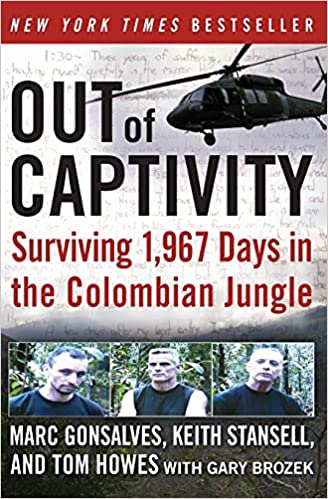
31. Out of Captivity: Surviving 1,967 Days in the Colombian Jungle
On February 13, 2003, a plane carrying three American military contractors–Marc Gonsalves, Tom Howes, and Keith Stansell–crashed in the mountainous jungle of Colombia. Dazed and shaken, they awoke covered in blood with automatic rifles pointing at their faces. As of that moment they belonged to the Colombian terrorist organization known as the FARC, American captives in Colombia′s volatile conflict that has stretched over the last half century. This harrowing crash and abduction began five and a half years of captivity at the hands of the FARC, as these three men struggled to survive the madness of their surroundings.
In Out of Captivity, Gonsalves, Howes, and Stansell recount their amazing tale of survival, friendship, and ultimately rescue in its entirety for the first time. Revealing the details of their crash, their horrific treatment at the hands of the FARC, what they witnessed as captives, and how they survived the experiences of their years, this book provides vivid firsthand accounts of their five and half years in the jungle. Offering a glimpse inside one of the world′s most notorious terrorist organizations, OUT OF CAPTIVITY tells the story of how far three Americans were willing to go as they fought to survive for themselves, their families, and each other.
A story of life, death, survival, and the saving power of friendship, Out of Captivity is a remarkable look at the unbreakable bonds between friends and indomitable strength of the human spirit.
32. Cassidy’s Run: The Secret Spy War Over Nerve Gas
Cassidy’s Run is the riveting story of one of the best-kept secrets of the Cold War—an espionage operation mounted by Washington against the Soviet Union that ran for twenty-three years. At the highest levels of the government, its code name was Operation shocker.
Lured by a double agent working for the United States, ten Russian spies, including a professor at the University of Minnesota, his wife, and a classic “sleeper” spy in New York City, were sent by Moscow to penetrate America’s secrets. Two FBI agents were killed, and secret formulas were passed to the Russians in a dangerous ploy that could have spurred Moscow to create the world’s most powerful nerve gas.
Cassidy’s Run tells this extraordinary true story for the first time, following a trail that leads from Washington to Moscow, with detours to Florida, Minnesota, and Mexico. Based on documents secret until now and scores of interviews in the United States and Russia, the book reveals that:
¸ more than 4,500 pages of classified documents, including U.S. nerve gas formulas, were passed to the Soviet Union in exchange for hundreds of thousands of dollars
¸ an “Armageddon code,” a telephone call to a number in New York City, was to alert the sleeper spy to an impending nuclear attack—a warning he would transmit to the Soviets by radio signal from atop a rock in Central Park
¸ two FBI agents were killed when their plane crashed during surveillance of one of the Soviet spies as he headed for the Canadian border
¸ secret “drops” for microdots were set up by Moscow from New York to Florida to Washington
More than a cloak-and-dagger tale, Cassidy’s Run is the spellbinding story of one ordinary man, Sergeant Joe Cassidy, not trained as a spy, who suddenly found himself the FBI’s secret weapon in a dangerous clandestine war.
33. Strangers on a Bridge: The Case of Colonel Abel and Francis Gary Powers
In the early morning of February 10, 1962, James B. Donovan began his walk toward the center of the Glienicke Bridge, the famous “Bridge of Spies” which then linked West Berlin to East. With him, walked Rudolf Ivanovich Abel, master spy and for years the chief of Soviet espionage in the United States. Approaching them from the other side, under equally heavy guard, was Francis Gary Powers, the American U-2 spy plane pilot famously shot down by the Soviets, whose exchange for Abel Donovan had negotiated. These were the strangers on a bridge, men of East and West, representatives of two opposed worlds meeting in a moment of high drama.
Abel was the most gifted, the most mysterious, the most effective spy in his time. His trial, which began in a Brooklyn United States District Court and ended in the Supreme Court of the United States, chillingly revealed the methods and successes of Soviet espionage.
No one was better equipped to tell the whole absorbing history than James B. Donovan, who was appointed to defend one of his country’s enemies and did so with scrupulous skill. In Strangers on a Bridge, the lead prosecutor in the Nuremburg Trials offers a clear-eyed and fast-paced memoir that is part procedural drama, part dark character study and reads like a noirish espionage thriller. From the first interview with Abel to the exchange on the bridge in Berlin—and featuring unseen photographs of Donovan and Abel as well as trial notes and sketches drawn from Abel’s prison cell—here is an important historical narrative that is as fascinating as it is exciting”.
34. George Washington’s Secret Six: The Spy Ring That Saved the American Revolution
When George Washington beat a hasty retreat from New York City in August 1776, many thought the American Revolution might soon be over. Instead, Washington rallied—thanks in large part to a little-known, top-secret group called the Culper Spy Ring. He realized that he couldn’t defeat the British with military might, so he recruited a sophisticated and deeply secretive intelligence network to infiltrate New York.
Drawing on extensive research, Brian Kilmeade and Don Yaeger have offered fascinating portraits of these spies: a reserved Quaker merchant, a tavern keeper, a brash young longshoreman, a curmudgeonly Long Island bachelor, a coffeehouse owner, and a mysterious woman. Long unrecognized, the secret six are finally receiving their due among the pantheon of American heroes.
George Washington’s Secret Six is my personal favorite book about espionage during the American Revolution.
35. The Killing of SS Obergruppenfuhrer Reinhard Heydrich
The extraordinary account of one of the most daring World War II missions, as told in the movie Anthropoid
If anyone warranted assassination during World War II, the man to know was Reinhard Heydrich (1904-1942) — chief of the security police, rabid anti-Semite, architect of the Final Solution, ruthless overlord of Nazi-occupied Czechoslovakia, and Hitler’s most likely successor. In 1941, at the height of the Nazis’ seeming invincibility, the Czech government-in-exile launched a desperate operation to kill Heydrich. From the assassins’ training in England to their Thermopylae-like last stand in the flooded crypt of a Prague church, and the Nazis’ savage reprisals (including the obliteration of two villages), The Killing of Reinhard Heydrich brilliantly recounts one of World War II’s most daring and tragic missions.
36. The Secret Sentry: The Untold History of the National Security Agency
In February of 2006, Matthew Aid’s discovery of a massive secret historical document reclassification program then taking place at the National Archives made the front page of the New York Times. This discovery is only the tip of the iceberg of Aid’s more than twenty years of intensive research, culled from thousands of pages of formerly top secret documents.
In The Secret Sentry, he details the untold history of America’s most elusive and powerful intelligence agency, the National Security Agency (NSA), since the end of World War II. This will be the first comprehensive history of the NSA, most recently in the news with regards to domestic spying, and will reveal brand new details about controversial episodes including the creation of Israel, the Bay of Pigs, the Berlin Wall, and the invasion of Iraq. Since the beginning of the Cold War, the NSA has become the most important source of intelligence in the US government: 60% of the president’s daily briefing comes from the NSA.
Matthew Aid reveals just how this came to be, and why the NSA has gone to such great lengths to keep its history secret.
37. BRIXMIS: The Last Cold War Mission
BRIXMIS (British Commander-in-Chief’s Mission to the Group Soviet Forces of Occupation in Germany) is one of the most covert elite units of the British Army. They were dropped in behind ‘enemy lines’ ten months after the Second World War had ended and continued with their intelligence-gathering missions until the fall of the Berlin Wall in November 1989.
During this period Berlin was a hotbed of spying between East and West. BRIXMIS was established as a trusted channel of communication between the Red Army and the British Army on the Rhine. However, they acted in the shadows to steal advanced Soviet equipment and penetrate top-secret training areas. In BRIXMIS: The Last Cold War Mission, Steve Gibson offers a new understanding of the complex British role in the Cold War.
38. For the President’s Eyes Only: Secret Intelligence and the American Presidency from Washington to Bush
A prolific British historian (the joint author of a well-regarded history of the KGB) provides a richly detailed account of the uses to which American presidents have put U.S. intelligence agencies. Most of the work deals with the Cold War period (although George Washington emerges as a minor hero for his adept use of spies in the Revolutionary War).
Andrew tends to be harder on Cold War presidents than he is on the intelligence community; although the latter had its share of failures, presidents tended to deprecate its product because of exaggerated expectations, simultaneously underestimating the value of intelligence (for instance, in stabilizing the Cold War competition in armaments) while overestimating “the secret power that covert action put at their command.”
For the President’s Eyes Only is another outstanding work by one of the most authoritative historians covering the world of espionage.
39. The Secret History of World War II: Spies, Code Breakers, and Covert Operations
From top secret spy missions to recently declassified WWII documents, this richly illustrated account of the covert espionage operations of World War II takes readers behind the battle lines and into the undercover war effort. National Geographic’s landmark book includes recently released never-before-seen photographs, coded messages, classified maps, and more than 700 rare artifacts that shed light on the war’s darkest secrets.
This is the shocking story behind the covert activity that shaped the outcome of one of the world’s greatest conflicts—and the destiny of millions of people. Illuminating World War II as never before, this fascinating book takes you inside the secret lives of spies and spy masters; secret agents and secret armies; Enigma machines and code breakers; psychological warfare and black propaganda; secret weapons and secret battle strategies.
Six heavily illustrated narrative chapters reveal the truth behind the lies and deception that shaped the secret war; six pictorial essays showcase hundreds of rare photos and artifacts (many never before seen); more than 45 specially created sidebars tell the stories of spies and secret operations.
In The Secret History of World War II, Renowned historian and top-selling author Stephen Hyslop reveals this little-known side of the war in captivating detail, weaving in extraordinary eyewitness accounts and information only recently declassified. Rare photographs, artifacts, and illuminating graphics enrich this absorbing reference book.
40. We Fight for Peace: Twenty-Three American Soldiers, Prisoners of War, and Turncoats in the Korean War
At midnight on January 24, 1954, the last step was taken in the armistice to end the war in Korea. That night, the neutral Indian guards who had overseen the prisoner of war repatriation process abandoned their posts, leaving their charges to make their own decisions. The vast majority of men allowed to choose a new nation were Chinese and North Koreans who elected the path of freedom. There were smaller groups hoping that the communist bloc would give them a better life; among these men were 21 American soldiers and prisoners of war. We Fight for Peace tells their story.
During the four months prior to the armistice, news had spread throughout the United States and the world that a group of 23 Americans was refusing repatriation. In the interim, two of the 23 soldiers had escaped. Once back behind American lines, the first voluntary repatriate, Edward Dickenson, was given celebrity treatment with the hope that this positive experience would entice the others to return to the United States. Just one more American POW, Claude Batchelor, chose repatriation.
In the United States, Dickenson, who was being treated at Walter Reed Medical Center, was placed under arrest and charged with a variety of collaboration related crimes. Weeks later, Batchelor was similarly arrested. Over the course of the coming months, Dickenson and Batchelor, against the backdrop of Joseph McCarthy’s Army Hearings, were prosecuted, convicted, and imprisoned. In the ensuing years, Dickenson and Batchelor, both of whom had voluntarily returned to the United States, watched from their jail cells as most of the remaining 21 Americans trickled back home, protected by the dishonorable discharges they received.
We Fight for Peace is the first comprehensive scholarly work on this controversial event in international history.
Author Brian McKnight was also my guest for episode #29 of the Spycraft 101 podcast, where we discussed this book in depth.
41. The Ghost: The Secret Life of CIA Spymaster James Jesus Angleton
CIA spymaster James Jesus Angleton was one of the most powerful unelected officials in the United States government in the mid-20th century, a ghost of American power. From World War II to the Cold War, Angleton operated beyond the view of the public, Congress, and even the president. He unwittingly shared intelligence secrets with Soviet spy Kim Philby, a member of the notorious Cambridge spy ring. He launched mass surveillance by opening the mail of hundreds of thousands of Americans. He abetted a scheme to aid Israel’s own nuclear efforts, disregarding U.S. security. He committed perjury and obstructed the JFK assassination investigation. He oversaw a massive spying operation on the antiwar and black nationalist movements and he initiated an obsessive search for communist moles that nearly destroyed the Agency.
In The Ghost, investigative reporter Jefferson Morley tells Angleton’s dramatic story, from his friendship with the poet Ezra Pound through the underground gay milieu of mid-century Washington to the Kennedy assassination to the Watergate scandal. From the agency’s MKULTRA mind-control experiments to the wars of the Mideast, Angleton wielded far more power than anyone knew. Yet during his seemingly lawless reign in the CIA, he also proved himself to be a formidable adversary to our nation’s enemies, acquiring a mythic stature within the CIA that continues to this day.
Author Jefferson Morley was my guest for episode #28 of the Spycraft 101 podcast, where we discussed his research into this incredible and controversial figure from the Cold War.
42. From Warsaw with Love: Polish Spies, the CIA, and the Forging of an Unlikely Alliance
From Warsaw with Love is the epic story of how Polish intelligence officers forged an alliance with the CIA in the twilight of the Cold War, told by the award-winning author John Pomfret.
Spanning decades and continents, from the battlefields of the Balkans to secret nuclear research labs in Iran and embassy grounds in North Korea, this saga begins in 1990. As the United States cobbles together a coalition to undo Saddam Hussein’s invasion of Kuwait, six US officers are trapped in Iraq with intelligence that could ruin Operation Desert Storm if it is obtained by the brutal Iraqi dictator. Desperate, the CIA asks Poland, a longtime Cold War foe famed for its excellent spies, for help. Just months after the Polish people voted in their first democratic election since the 1930s, the young Solidarity government in Warsaw sends a veteran ex-Communist spy who’d battled the West for decades to rescue the six Americans.
John Pomfret’s gripping account of the 1990 cliffhanger in Iraq is just the beginning of the tale about intelligence cooperation between Poland and the United States, cooperation that one CIA director would later describe as “one of the two foremost intelligence relationships that the United States has ever had.” Pomfret uncovers new details about the CIA’s black site program that held suspected terrorists in Poland after 9/11 as well as the role of Polish spies in the hunt for Osama bin Laden.
In the tradition of the most memorable works on espionage, From Warsaw with Love tells a distressing and disquieting tale of moral ambiguity in which right and wrong, black and white, are not conveniently distinguishable. As the United States teeters on the edge of a new cold war with Russia and China, Pomfret explores how these little-known events serve as a reminder of the importance of alliances in a dangerous world.
For listeners of the Spycraft 101 podcast, episode #27 features my discussion with John Pomfret about his incredible book.
43. KGB: The Inside Story
This history of the world’s largest and most powerful intelligence service, the KGB, from its origin after the Russian revolution to the present day, analyzes its operations against subjects as diverse as the EEC, Margaret Thatcher, Solidarity and Libya.
This study also provides an insight into Gorbachev’s relations with the KGB and examines the disintegration of the Soviet bloc. Author Christopher Andrew has also written “Secret Service”. Gordievsky was a KGB colonel who worked for British intelligence as a penetration agent in the KGB from 1974. He escaped to the West in 1985.
KGB: The Inside Story is a must-read for any serious Cold War historian.
44. King of Spies: The Dark Reign of an American Spymaster
In 1946, master sergeant Donald Nichols was repairing jeeps on the sleepy island of Guam when he caught the eye of recruiters from the army’s Counter Intelligence Corps. After just three months’ training, he was sent to Korea, then a backwater beneath the radar of MacArthur’s Pacific Command. Though he lacked the pedigree of most U.S. spies—Nichols was a 7th grade dropout—he quickly metamorphosed from army mechanic to black ops phenomenon. He insinuated himself into the affections of America’s chosen puppet in South Korea, President Syngman Rhee, and became a pivotal player in the Korean War, warning months in advance about the North Korean invasion, breaking enemy codes, and identifying most of the targets destroyed by American bombs in North Korea.
But Nichols’s triumphs had a dark side. Immersed in a world of torture and beheadings, he became a spymaster with his own secret base, his own covert army, and his own rules. He recruited agents from refugee camps and prisons, sending many to their deaths on reckless missions. His closeness to Rhee meant that he witnessed—and did nothing to stop or even report—the slaughter of tens of thousands of South Korean civilians in anticommunist purges. Nichols’s clandestine reign lasted for an astounding eleven years.
In King of Spies, Blaine Harden traces Nichols’s unlikely rise and tragic ruin, from his birth in an operatically dysfunctional family in New Jersey to his sordid postwar decline, which began when the U.S. military sacked him in Korea, sent him to an air force psych ward in Florida, and subjected him—against his will—to months of electroshock therapy. But King of Spies is not just the story of one American spy. It is a groundbreaking work of narrative history that—at a time when North Korea is threatening the United States with long-range nuclear missiles—explains the origins of an intractable foreign policy mess.
45. The Cold War Wilderness of Mirrors: Counterintelligence and the U.S. and Soviet Military Liaison Missions 1947–1990
The untold story of the Soviet Military Liaison Mission (SMLM) in West Germany and the U.S. Military Liaison Mission (USMLM) in East Germany.
This book details the Soviet Military Liaison Mission (SMLM) in West Germany and the U.S. Military Liaison Mission (USMLM) in East Germany as microcosms of the Cold War strategic intelligence and counterintelligence landscape. Thirty years since the fall of the Berlin Wall, the Soviet and U.S. Military Liaison Missions are all but forgotten. Their operation was established by a post-WWII Allied occupation forces’ agreement, and missions had relative freedom to travel and collect intelligence throughout East and West Germany from 1947 until 1990.
This book addresses Cold War intelligence and counterintelligence in a manner that provides a broad historical perspective and then brings the reader to a never-before documented artifact of Cold War history. The book details the intelligence and counterintelligence dynamic that was among the most emblematic of the Cold War. Ultimately, The Cold War Wilderness of Mirrors addresses a saga that remains one of the true Cold War enigmas.
Author Aden Magee was my guest for episode #23 of the Spycraft 101 podcast.
46. The History of the Stasi: East Germany’s Secret Police, 1945-1990
A well-balanced and detailed look at the East German Ministry for State Security, the secret police force more commonly known as the Stasi.
The Stasi stood for Stalinist oppression and all-encompassing surveillance. The “shield and sword of the party,” it secured the rule of the Communist Party for more than forty years, and by the 1980s it had become the largest secret-police apparatus in the world, per capita.
Jens Gieseke tells the story of the Stasi, a feared secret-police force and a highly professional intelligence service. He inquires into the mechanisms of dictatorship and the day-to-day effects of surveillance and suspicion. Masterful and thorough at once, he takes the reader through this dark chapter of German postwar history, supplying key information on perpetrators, informers, and victims. In an assessment of post-communist memory politics, he critically discusses the consequences of opening the files and the outcomes of the Stasi debate in reunified Germany.
A major guide for research on communist secret-police forces, The History of the Stasi is considered the standard reference work on the Stasi.
47. Spyflights and Overflights: US Strategic Aerial Reconnaissance 1945-1960
Few aviation subjects have been shrouded in more secrecy or been more controversial than Cold War aerial reconnaissance. Former reconnaissance pilot Robert S. Hopkins, III, offers new insights into strategic intelligence flights during the early years of the cold war.
Primarily undertaken by RB-50s and RB-47s of the Strategic Air Command and by CIA U-2s, other Western nations such as Britain, Sweden, and Taiwan were equally committed to gathering intelligence about the Soviet Union and its allies, and conducted their own peripheral and overflight missions.
Hopkins challenges longstanding beliefs that the flights served to prevent war, curtailed needless defense spending, and were undertaken by rogue generals bent on starting World War III.
For the first time he shows the Soviet perspective on the flights, and makes a compelling case that reconnaissance flights did not have a sustained adverse effect on Soviet relations with the West.
In Spyflights and Overflights, Hopkins uses newly-declassified materials, interviews with crews and policy makers, and his own experience flying strategic reconnaissance missions, to link the daily operations of courageous fliers with decisions by presidents and prime ministers that decided the outcome of the Cold War.
48. Capital of Spies: Intelligence Agencies in Berlin During the Cold War
For almost half a century, the hottest front in the Cold War was right across Berlin. From summer 1945 until 1990, the secret services of NATO and the Warsaw Pact fought an ongoing duel in the dark. Throughout the Cold War, espionage was part of everyday life in both East and West Berlin, with German spies playing a crucial part of operations on both sides: Erich Mielke’s Stasi and Reinhard Gehlen’s Federal Intelligence Service, for example.
The construction of the wall in 1961 changed the political situation and the environment for espionage—the invisible front was now concreted and unmistakable. But the fundamentals had not changed: Berlin was and would remain the capital of spies until the fall of the Berlin Wall, a fact which makes it all the more surprising that there are hardly any books about the work of the secret services in Berlin during the Cold War. in Capital of Spies, journalist Sven Felix Kellerhoff and historian Bernd von Kostka describe the spectacular successes and failures of the various secret services based in the city.
49. Best of Enemies: The Last Great Spy Story of the Cold War
The thrilling story of two Cold War spies, CIA case officer Jack Platt and KGB agent Gennady Vasilenko — improbable friends at a time when they should have been anything but.
In 1978, CIA maverick Jack Platt and KGB agent Gennady Vasilenko were new arrivals on the Washington, DC intelligence scene, with Jack working out of the CIA’s counterintelligence office and Gennady out of the Soviet Embassy. Both men, already notorious iconoclasts within their respective agencies, were assigned to seduce the other into betraying his country in the urgent final days of the Cold War, but instead the men ended up becoming the best of friends-blood brothers. Theirs is a friendship that never should have happened, and their story is chock full of treachery, darkly comic misunderstandings, bureaucratic inanity, the Russian Mafia, and landmark intelligence breakthroughs of the past half century.
In Best of Enemies, two espionage cowboys reveal how they became key behind-the-scenes players in solving some of the most celebrated spy stories of the twentieth century, including the crucial discovery of the Soviet mole Robert Hanssen, the 2010 Spy Swap which freed Gennady from Soviet imprisonment, and how Robert De Niro played a real-life role in helping Gennady stay alive during his incarceration in Russia after being falsely accused of spying for the Americans. Through their eyes, we see the distinctions between the Russian and American methods of conducting espionage and the painful birth of the new Russia, whose leader, Vladimir Putin, dreams he can roll back to the ideals of the old USSR.
50. The Man with the Poison Gun
1961. The height of the Cold War. Just hours before work begins on the Berlin Wall, a KGB assassin and his young wife flee for the West before the Iron Curtain comes down and traps them in the East forever.
This gripping story of real-life espionage and intrigue began when the Soviets invented a special weapon that killed without leaving a trace and put it in the hands of Bogdan Stashinsky. It is a tale of exploding parcels, fake identities, forbidden love and a man who knew the truth about the USSR’s most classified programme. By the time Stashinsky had his day in court, the whole world was watching.
Author Serhii Plokhy was my guest on the Spycraft 101 podcast episode #20, where we discussed his amazing book The Man with the Poison Gun.
51. Tiger Trap: America’s Secret Spy War with China
For decades, while America obsessed over Soviet spies, China quietly penetrated the highest levels of government. Now, for the first time, based on numerous interviews with key insiders at the FBI and CIA as well as with Chinese agents and people close to them, David Wise tells the full story of China’s many victories and defeats in its American spy wars.
Two key cases interweave throughout: Katrina Leung, code-named Parlor Maid, worked for the FBI for years even after she became a secret double agent for China, aided by love affairs with both of her FBI handlers. Here, too, is the inside story of the case, code-named Tiger Trap, of a key Chinese-American scientist suspected of stealing nuclear weapons secrets.
These two cases led to many others, involving famous names from Wen Ho Lee to Richard Nixon, stunning national security leaks, sophisticated cyberspying, and a West Coast spy ring whose members were sentenced in 2010. As concerns swirl about US-China relations and the challenges faced by our intelligence community, Tiger Trap provides an important overview from America’s premier writer on espionage.
52. First Casualty: The Untold Story of the Battle That Began the War in Afghanistan
Bestselling and Orwell Prize-winning author Toby Harnden tells the gripping and incredible story of the six-day battle that began the War in Afghanistan and how it set the scene for twenty years of conflict.
The West is in shock. Al-Qaeda has struck the US on 9/11 and thousands are dead.
Within weeks, UK Special Forces enter the fray in Afghanistan alongside the CIA’s Team Alpha and US troops.
Victory is swift, but fragile. Hundreds of jihadists surrender and two operatives from Team Alpha enter Qala-i Jangi – the ‘Fort of War’ – to interrogate them. The prisoners revolt, one CIA man falls, and the other is trapped inside the fort. Seven members of the SBS – elite British Special Forces – volunteer for the rescue force and race into danger and the unknown.
The six-day battle that follows proves to be one of the bloodiest of the Afghanistan war as the SBS and their American comrades face an enemy determined to die in the mud citadel.
Toby was my guest for episode #17 of the Spycraft 101 podcast. Discussing First Casualty with him was one of my favorite conversations yet.
53. Spy: The Inside Story of How the FBI’s Robert Hanssen Betrayed America
Spy tells, for the first time, the full, authoritative story of how FBI agent Robert Hanssen, code name grayday, spied for Russia for twenty-two years in what has been called the “worst intelligence disaster in U.S. history”–and how he was finally caught in an incredible gambit by U.S. intelligence.
David Wise, the nation’s leading espionage writer, has called on his unique knowledge and unrivaled intelligence sources to write the definitive, inside story of how Robert Hanssen betrayed his country, and why.
Spy at last reveals the mind and motives of a man who was a walking paradox: FBI counterspy, KGB mole, devout Catholic, obsessed pornographer who secretly televised himself and his wife having sex so that his best friend could watch, defender of family values, fantasy James Bond who took a stripper to Hong Kong and carried a machine gun in his car trunk.
Brimming with startling new details sure to make headlines, Spy discloses:
• the previously untold story of how the FBI got the actual file on Robert Hanssen out of KGB headquarters in Moscow for $7 million in an unprecedented operation that ended in Hanssen’s arrest.
• how for three years, the FBI pursued a CIA officer, code name gray deceiver, in the mistaken belief that he was the mole they were seeking inside U.S. intelligence. The innocent officer was accused as a spy and suspended by the CIA for nearly two years.
• why Hanssen spied, based on exclusive interviews with Dr. David L. Charney, the psychiatrist who met with Hanssen in his jail cell more than thirty times. Hanssen, in an extraordinary arrangement, authorized Charney to talk to the author.
• the full story of Robert Hanssen’s bizarre sex life, including the hidden video camera he set up in his bedroom and how he plotted to drug his wife, Bonnie, so that his best friend could father her child.
• how Hanssen and the CIA’s Aldrich Ames betrayed three Russians secretly spying for the FBI–including tophat, a Soviet general–who were then executed by Moscow.
• that after Hanssen was already working for the KGB, he directed a study of moles in the FBI when–as he alone knew–he was the mole.
Robert Hanssen betrayed the FBI. He betrayed his country. He betrayed his wife. He betrayed his children. He betrayed his best friend, offering him up to the KGB. He betrayed his God. Most of all, he betrayed himself. Only David Wise could tell the astonishing, full story, and he does so, in masterly style, in Spy: The Inside Story of How the FBI’s Robert Hanssen Betrayed America.
54. The Spy in Moscow Station: A Counterspy’s Hunt for a Deadly Cold War Threat
The thrilling, true story of the race to find a leak in the United States Embassy in Moscow―before more American assets are rounded up and killed.
In the late 1970s, the National Security Agency still did not officially exist―those in the know referred to it dryly as the No Such Agency. So why, when NSA engineer Charles Gandy filed for a visa to visit Moscow, did the Russian Foreign Ministry assert with confidence that he was a spy?
Outsmarting honey traps and encroaching deep enough into enemy territory to perform complicated technical investigations, Gandy accomplished his mission in Russia, but discovered more than State and CIA wanted him to know.
Eric Haseltine’s The Spy in Moscow Station tells of a time when―much like today―Russian spycraft had proven itself far beyond the best technology the U.S. had to offer. The perils of American arrogance mixed with bureaucratic infighting left the country unspeakably vulnerable to ultra-sophisticated Russian electronic surveillance and espionage.
This is the true story of unorthodox, underdog intelligence officers who fought an uphill battle against their own government to prove that the KGB had pulled off the most devastating penetration of U.S. national security in history. If you think “The Americans” isn’t riveting enough, you’ll love this toe-curling nonfiction thriller.
Author Eric Haseltine was my guest for episode #18 of the Spycraft 101 podcast. The story he tells in The Spy in Moscow Station is not to be missed.
55. The Sword and the Shield: The Mitrokhin Archive and the Secret History of the KGB
The Sword and the Shield is based on one of the most extraordinary intelligence coups of recent times: a secret archive of top-level KGB documents smuggled out of the Soviet Union which the FBI has described, after close examination, as the “most complete and extensive intelligence ever received from any source.”
Its presence in the West represents a catastrophic hemorrhage of the KGB’s secrets and reveals for the first time the full extent of its worldwide network. Vasili Mitrokhin, a secret dissident who worked in the KGB archive, smuggled out copies of its most highly classified files every day for twelve years. In 1992, a U.S. ally succeeded in exfiltrating the KGB officer and his entire archive out of Moscow.
The archive covers the entire period from the Bolshevik Revolution to the 1980s and includes revelations concerning almost every country in the world. But the KGB’s main target, of course, was the United States. Though there is top-secret material on almost every country in the world, the United States is at the top of the list. As well as containing many fascinating revelations, this is a major contribution to the secret history of the twentieth century.
Among the topics and revelations explored are: The KGB’s covert operations in the United States and throughout the West, some of which remain dangerous today. KGB files on Oswald and the JFK assassination that Boris Yeltsin almost certainly has no intention of showing President Clinton. The KGB’s attempts to discredit civil rights leader in the 1960s, including its infiltration of the inner circle of a key leader. The KGB’s use of radio intercept posts in New York and Washington, D.C., in the 1970s to intercept high-level U.S. government communications.
The KGB’s attempts to steal technological secrets from major U.S. aerospace and technology corporations. KGB covert operations against former President Ronald Reagan, which began five years before he became president. KGB spies who successfully posed as U.S. citizens under a series of ingenious disguises, including several who attained access to the upper echelons of New York society.
Christopher Andrew is one of the preeminent scholars of Cold War history, and The Sword and the Shield might be his best work of all.
56. Chasing Shadows: A Special Agent’s Lifelong Hunt to Bring a Cold War Assassin to Justice
On a warm Saturday night in July 1973 in Bethesda Maryland, a gunman stepped out from behind a tree and fired five point-blank shots into Joe Alon, an unassuming Israeli Air Force pilot and family man. Alon’s sixteen-year-old neighbor, Fred Burton, was deeply shocked by this crime that rocked his sleepy suburban neighborhood. As it turned out, Alon wasn’t just a pilot—he was a high-ranking military official and with intelligence ties. The assassin was never found and the case was closed.
In 2007, Fred Burton—who had since become a State Department counterterrorism special agent—reopened the case. Here, in Chasing Shadows, Burton spins a gripping tale of the secret agents, double dealings, terrorists and heroes he encounters he chases leads around the globe in an effort to solve this decades-old murder. From swirling dogfights over Egypt and Hanoi to gun battles on the streets of Beirut, this action-packed thriller looks in the dark heart of the Cold War to show power is uses, misused, and sold to the most convenient bidder.
Author Fred Burton was featured on episode #15 of the Spycraft 101 podcast , where we discussed his years-long investigation into the deth of Joe Alon.
57. The Bureau and the Mole: The Unmasking of Robert Philip Hanssen, the Most Dangerous Double Agent in FBI History
Drawing from a wide variety of sources in the FBI, the Justice Department, the White House, and the intelligence community, Pulitzer Prize–winning author David A. Vise tells the story of how FBI counterintelligence agent Robert Philip Hanssen employed the very sources and methods his own nation had entrusted to him in a devious game of deceit—simply because he had something to prove.
Wise also interweaves the narrative of how FBI director Louis J. Freeh led the government’s desperate search for its betrayer among its own ranks, from the false leads, to the near misses, to its ultimate, shocking conclusion. Fascinating, gripping, and provocative, The Bureau and the Mole is a harrowing tale of how one man’s treachery rocked a fraternity built on fidelity, bravery, and integrity—and how the dedicated perseverance of another brought him to justice.
58. Tunnel 29: The True Story of an Extraordinary Escape Beneath the Berlin Wall
In the summer of 1962, a young student named Joachim Rudolph dug a tunnel under the Berlin Wall. Waiting on the other side in East Berlin were dozens of men, women, and children—all willing to risk everything to escape.
From the award-winning creator of the acclaimed BBC Radio 4 podcast, Tunnel 29 is the true story of this most remarkable Cold War rescue mission. Drawing on interviews with the survivors and Stasi files, Helena Merriman brilliantly reveals the stranger-than-fiction story of the ingenious group of student-diggers, the glamorous red-haired messenger, the Stasi spy who threatened the whole enterprise, and the love story that became its surprising epilogue.
Tunnel 29 was also the first made-for-TV event of its kind; it was funded by NBC, who wanted to film an escape in real time. Their documentary—which was nearly blocked from airing by the Kennedy administration, which wanted to control the media during the Cold War—revolutionized TV journalism.
Ultimately, Tunnel 29 is a success story about freedom: the valiant citizens risking everything to win it back, and the larger world rooting for them to triumph.
59. Defend the Realm: The Authorized History of MI5
An unprecedented publishing event: to mark the centenary of its foundation, the British Security Service, MI5, has for the first time opened its archives to an independent historian. The book reveals the precise role of the Security Service in twentieth-century British history, from its foundation by Captain Kell of the British Army in October 1909, through two world wars, up to and including its present roles in counterespionage and counterterrorism. The book describes how MI5 has been managed, what its relationship has been with government, where it has triumphed, and where it has failed. In all of this no restriction has been placed on the judgments made by the author.
Defend the Realm also adds significantly to our knowledge of many celebrated events and notorious individuals and definitively lays to rest a number of persistent myths.Above all, it shows the place of this previously extremely secretive organization within the United Kingdom. Few books could make such an immediate and extraordinary increase to our understanding of British history over the past century.
60. The Spy and the Traitor: The Greatest Espionage Story of the Cold War
If anyone could be considered a Russian counterpart to the infamous British double-agent Kim Philby, it was Oleg Gordievsky. The son of two KGB agents and the product of the best Soviet institutions, the savvy, sophisticated Gordievsky grew to see his nation’s communism as both criminal and philistine. He took his first posting for Russian intelligence in 1968 and eventually became the Soviet Union’s top man in London, but from 1973 on he was secretly working for MI6. For nearly a decade, as the Cold War reached its twilight, Gordievsky helped the West turn the tables on the KGB, exposing Russian spies and helping to foil countless intelligence plots, as the Soviet leadership grew increasingly paranoid at the United States’s nuclear first-strike capabilities and brought the world closer to the brink of war. Desperate to keep the circle of trust close, MI6 never revealed Gordievsky’s name to its counterparts in the CIA, which in turn grew obsessed with figuring out the identity of Britain’s obviously top-level source. Their obsession ultimately doomed Gordievsky: the CIA officer assigned to identify him was none other than Aldrich Ames, the man who would become infamous for secretly spying for the Soviets.
Unfolding the delicious three-way gamesmanship between America, Britain, and the Soviet Union, and culminating in the gripping cinematic beat-by-beat of Gordievsky’s nail-biting escape from Moscow in 1985, Ben Macintyre’s latest may be his best yet. Like the greatest novels of John le Carré, The Spy and the Traitor brings readers deep into a world of treachery and betrayal, where the lines bleed between the personal and the professional, and one man’s hatred of communism had the power to change the future of nations.
